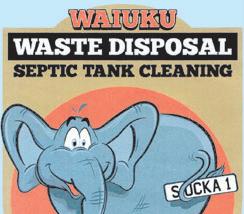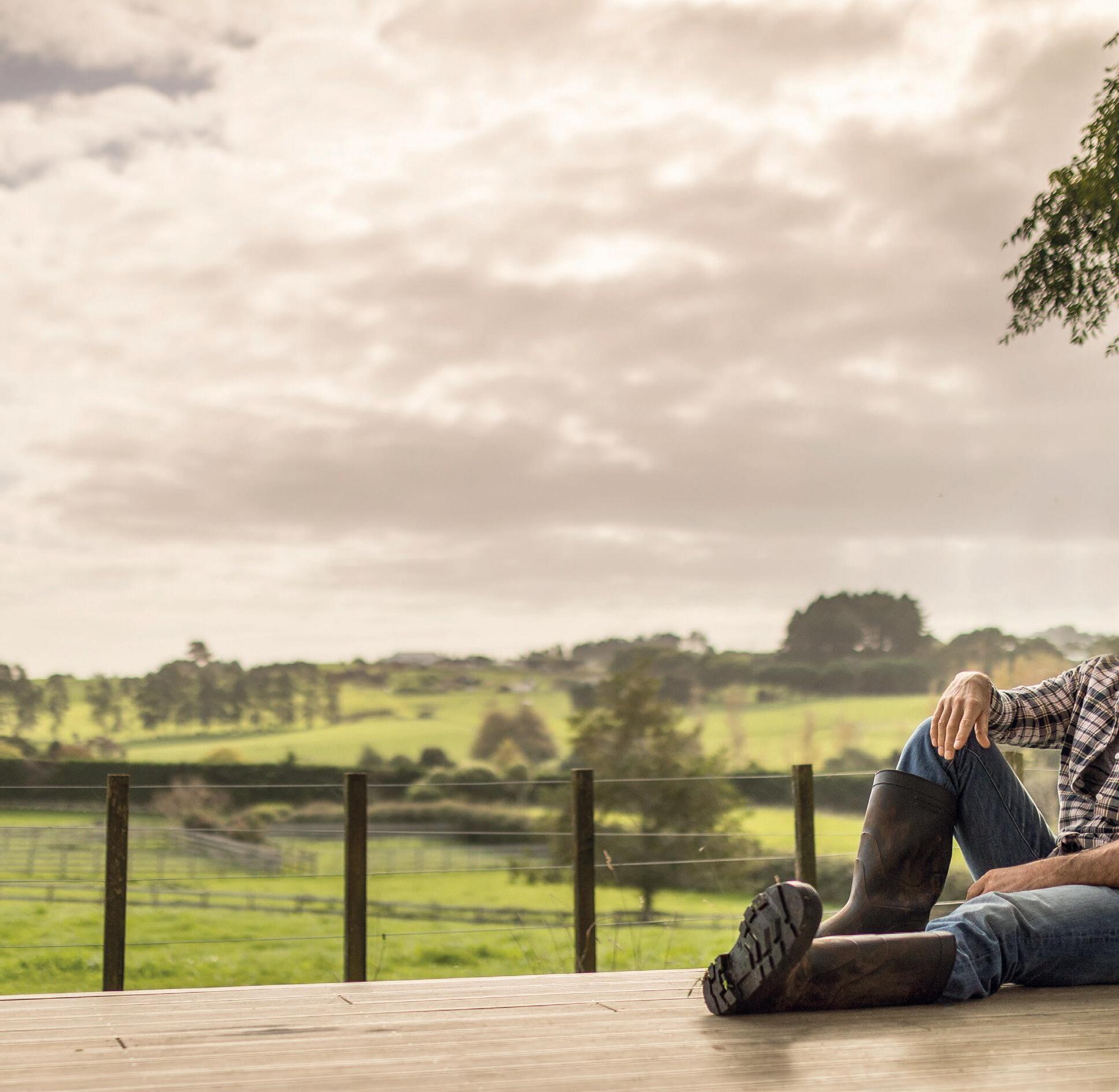






































ANZAC Day commemorations
April 25, times and locations vary
In Papakura and Pukekohe, Waiuku, Tuakau and more, the Franklin region will remember those who risked (or gave) their lives in the line of duty on ANZAC Day. To mark the day, NZ Warbirds will provide a fly past and visitors are welcome to watch historic aircraft take o and land at their Ardmore Airport base. See www.rsa.org.nz for a list of local services.

Waiuku Steel ‘n’ Wheels Festival
April 30, 10am-2pm, Waiuku town centre

Although at a standstill last year, one of Waiuku’s most anticipated events has been given the green light again. Not just a petrolhead’s heaven, this festival o ers a wide range of attractions for all members of the family as well as cars, cars, cars... and cars! See www.waiukutown.co.nz for more information.

Sanctuary St James – Autumn at All Souls
April 30 – May 28, from 7pm, All Souls, North Rd, Clevedon Music is set to fill All Souls Church during a quartet of inspiring concerts. From the lively gypsy jazz of Twistin’ the Swing (April 30) to performances by The Dégustriō, the Jade Quartet and the Jubilation Choir, this series (usually held at St James) is sure to set toes tapping. For more additional information visit www.clevedonanglicans.org.nz.

The Sex Fiend
May 4-20, times vary, Backstage Theatre, Victoria Ave, Waiuku
From Waiuku Theatre and Playmarket NZ comes a titillating romp that’s received rave reviews since it first hit the boards in 1989. Written by Stephen Sinclair and Danny Mulheron, directed by Kirsty Ward, The Sex Fiend reveals what happens when a Kiwi bloke from Palmy attends a women’s poetry meeting. Details at www.waiukutheatre.com.

Papakura StreetFEST
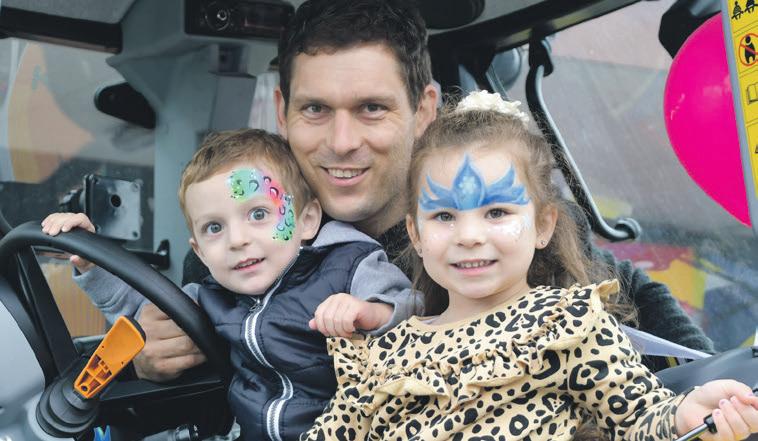
May 6 (rain date May 13), 10am-2pm, Great South Rd & Broadway, Papakura
This annual festival is back and promising to deliver a wide range of entertainment. From live music, dance and cultural performances to stalls and more, this event expects to celebrate the diversity of this local town. Additional information is available at www.papakura.co.nz.
Noises O
May 6-27, O Broadway Theatre, 41 Elliot St, Papakura Papakura Theatre Company presents its take on a classic farce by English playwright, Michael Frayn. This ‘play within a play’ sees one of our local troupes play with the notion of postmodernist storytelling. Those who grasp that last statement will enjoy the spectacle; those who don’t will laugh regardless! See www.ptc.org.nz for more information.

Barfoot & Thompson Auckland Futurity Stakes

May 27, Pukekohe Park, Manukau Rd, Pukekohe
While some thoroughbreds thrive during summer, others come into their own when the ground is a little sticky, as this autumn raceday expects to prove. In any case, this free event is supported by a team that’s always on solid ‘footing’, rain or shine. A complete schedule is accessible online via www.pukekohepark.co.nz.

NZ Highwaymen
May 20, 8-10pm, Pukekohe Town Hall, Massey Ave, Pukekohe Don’t be waylaid when heading to Pukekohe on May 20!
Featuring Pukekohe’s own Dennis Marsh as well as fellow legends, Gray Bartlett, Eddie Low and Brendan Dugan, the NZ Highwaymen should give country music fans the time of their lives in exchange for a little of their money. Details via www.nzhighwaymen.com.

PLEASE NOTE: information regarding times & dates of these events was correct at the time this issue went to print. However, readers are advised to check events online for updates.
On April 25, our nation stops and reflects on sacrifices made on battlefields; on May 14, we serve mums burnt toast and some flowers from a petrol station – or the like! Both days honour those to whom we owe so much.
My grandparents all lived through the Second World War, with one of my grandmothers making bombs during the Blitz to hurl back at Adolf. They all served.
During the heyday of ‘the greatest generation’, gender roles were clearer – men manned the trenches (o ces, fields, factory floors etcetera) while women called the shots on the ‘home front’. These days, modern mums tend to come in a wider variety of guises – some mums are men and some are homemakers but most have one thing in common: they work too.
The average modern household depends on dual incomes. In addition, the average age of parents

has increased. This means (for many) a second income is a necessity, not a luxury, and grandma’s daycare is much less likely to be an option.
Parents who can a ord private (although subsidised) daycares may work fulltime and kindergartens help, but when children start school it’s a whole new ballgame. Flexible hours and the ability to work from home helps some, but these factors aren’t magic bullets, especially during school holidays. And then there are the strikes.

Education may be the most important aspect of preparing for the future, but childcare must be for purpose and suited to the modern age. We should all have the freedom to choose to be a stay-at-home parents, but we should all (mums and dads) be free to choose to work too.
With regards to our work at Rural Living, we interviewed a woman with her head in the clouds and her feet on the ground recently, NZ Warbirds’
Kim Parker. And, we discovered more about John Tomlinson’s ‘love of the game’, while Ben Plummer shares his behind-the-scenes account of grassroots’ rugby. We also have various bits and pieces related to ANZAC Day and Mother’s Day, including gift ideas and more.
As a ‘parting shot’, I’ll share this advice with which many parents faced with workplace workloads as well as big demands from little ones can relate:
“If people think you’re nailing it, they’ll be more inclined to hand you the hammer!’
– my mum.
Jon Rawlinson, editor




A TIMES MEDIA PUBLICATION
Freephone: 0800 456 789 • www.ruralliving.co.nz


Rural Living is a FREE monthly lifestyle magazine delivered to RD 1,2,3 and 4 rural lifestyle properties in the greater Franklin district and beyond – Pokeno to Drury/Karaka and Clevedon to Waiuku. It is also available from businesses throughout the district's regional townships, including their key community of Pukekohe.
THOROUGHBREDS:



When it comes to real estate – especially rural and lifestyle properties – it pays to invest in the services of agents with a genuine, local track record. Two such chaps (Jason Tabrum and Luke Jupp – featured on our cover) were spotted at Pukekohe Park looking casually dapper during the Barfoot & Thompson Auckland Cup Day races. To view more photos, visit ruralliving.co.nz and see page 23.
info@ruralliving.co.nz
Editor: Jon Rawlinson

DDI 09 271 8036 editor@ruralliving.co.nz
Sales: Kelly Cooke
DDI 09 271 8026 kellyc@ruralliving.co.nz
Art Director: Clare McGillivray
DDI 09 271 8067 clare@ruralliving.co.nz
Design: Claire Robertson clairer@times.co.nz
Publisher: Brian Neben 151 King Street, Pukekohe, Auckland PO Box 38 232 Howick, Auckland 2145










Two-bedroom apartments from just $585,000 at Awatere Village.
Located in the heart of Hamilton, Awatere Village offers you the best of both worlds. You’ll feel part of a vibrant and social community, while enjoying the freedom to get out and about in a city that’s right on your doorstep.

Thanks to the prime location, the best of Hamilton’s shopping, eateries, and walking trails are all within easy reach; meaning you’re never far from one of your favourite spots, or an exciting new discovery.
Designed with your comfort and convenience in mind, our open-plan twobedroom apartments start from $585,000; while our spacious two-bedroom plus options make entertaining the grandkids a breeze.
Premium onsite facilities mean it’s easy to catch up with new friends for a game of bowls, stay fit in the gym, trade stories over a drink at the stylish bar, or try your hand at a new hobby. With life at Awatere, there’s always something to look forward to.


Fixed weekly fee for life - Guaranteed.
To find out more about Awatere Village, call Kylie on 0800 333 688.
1350 Victoria Street, Beerescourt, Hamilton
oceaniahealthcare.co.nz
For residents 70 years and above. KC15790

Visit www.ruralliving.co.nz to enter our prize draws and be in to win. One entry per person/email address; entries close May 20, 2023. Winners notified by phone or email.






Bubbling with on-track action, this event is no ordinary day at the races. With many a glass of bubbles raised trackside, the Lindauer Ladies’ Lunch (June 21, details via www.pukekohepark.co.nz) is set to be the toast of the town… and country. While tickets are sure to be appreciated by mums on Mother’s Day, we also have a double pass (valued at $180) up for grabs.


Renowned garden designer, Gordon Collier, showcases some of his finest work in this new book with forewords by Kate Coughlan and Mauku local, the acclaimed Jack Hobbs. Featuring Gordon’s Anacapri (Taupo) as well as Titoki Point and The White House gardens (Taihape), this book bursts with the energy and creativity of the man behind their creation. We have a copy to give away.

Gordon Collier: Gordon Collier’s 3 Gardens | RRP $59.99 | Quentin Wilson Publishing














Intended to provide maximum comfort in any sleeping position, the Emma pillow’s ergonomic design is a dream come true! Due to its adjustable height and firmness, it is suitable for all body types. While this blissful bedtime headrest makes a perfect gift, we have pillows (valued at $250 each) to give away to TWO lucky readers.









Natio is celebrating its 30-year anniversary with a limited-edition collection and just in time for Mother’s Day! Featuring gently defining luminous tones and luxuriously flattering textures, the Celebrate Collection presents radiant colours. Intended to ensure Natio’s ‘Love Being You’ ethos shines through, it makes an ideal gift idea. We have a Celebrate Collection pack (valued at more than $170) to give away.
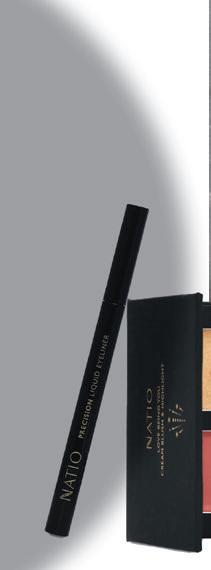















































No pilot prefers flying a desk but knowing Kim Parker is at the controls on the ground is sure to set their minds at ease. Ahead of ANZAC Day, we posed some questions to Kim, who recently took ‘the stick’ at NZ Warbirds, based in Ardmore.

What’s on the agenda for ANZAC Day? Lest we forget?
We have an ANZAC Day flypast to coincide with commemorations and people are welcome to come out to Ardmore and watch the fleet take o and land – ground operations can be just as interesting as watching the planes fly as there’s a lot of background support required for these aircraft.
As long as we have enthusiastic volunteers and members who help keep our history alive, we won’t forget!
Why is NZ Warbirds so important?
NZ Warbirds is a large stakeholder in the preservation of historical aircraft. We have a wonderful flying collection, based at Ardmore, which we like to share with the public through our visitors’ centre. Visitors can have a walk through our hangars as well as attend our regular (and popular) airshows and open days.
Why did you ‘take the stick’ at NZ Warbirds as general manager? Has the former GM, Mike Curwood, left big flying boots to fill?
The chair is definitely nicer! As the accounts administrator, I worked closely with the management team (almost like an apprenticeship) and, after four years, I was ready for more challenges and responsibility. Mike left to fly with Qantas – he was a great guy to work with and supported me going into my new role.
Do you fly a plane as well as a desk? Have you ever competed in air races? Can you perform aerobatics?
Yes. My husband (Scott) and I enjoy flying together, we have a Cessna 177 Cardinal – we call it the ‘family wagon’. No to air races. I enjoyed aerobatics when I was younger but not so much these days.
What’s been the most amazing plane you’ve flown and why? Have you flown the Bristol F2B, Fokker DR1, Spitfire or any (or all) of Warbirds’ most notable warbirds?
The most amazing so far would be open-cockpit aircraft, such as the Tiger Moth or the Boeing Stearman, as there’s something special about being out in
the fresh air. I’ve been up [with others as pilots] in Warbirds’ Beaver, Tiger Moth, Stearman and Harvards, but the fighters are definitely on my wish list.
Where were you born and raised? Have you always lived in our area?
I was born in Auckland and spent my early years in Pakuranga before we moved to Conifer Grove, Papakura. As my mother worked for an aeroclub on the airfield at Ardmore in the ‘70s and ‘80s, my sister and I practically grew up out here.

Are other members of your family involved with Warbirds? Do they share your love of flying?

Scott is an airline pilot with Cathay Pacific Airways, a member of Warbirds and flies when he can. Our two children have both flown solo and enjoy recreational flying too.
What other events can we look forward to at NZ Warbirds?
We’ll be holding our next major air show (Warbirds on Parade) on Sunday, June 4 to mark D-Day and, subject to weather, we should be flying on November 11 (Armistice Day) as well. We keep information about our shows up to date on our website: www.nzwarbirds.org.nz.
If you could grow any plant or raise any animal (real or imagined), what would it be and why?
I have a Jack Russell terrier and I would love to have more but that would ensure absolute chaos around my home!
If you could be Prime Minister for a day, what would you do first and why?
I’d make sure that museums (not just our own) and anyone else who preserves our heritage received all the funding they needed.
If you could invite any three people (living or dead) to dinner, who and why?
I could say I’d invite such great aviators as the Wright brothers, Jean Batten or Amelia Earhart, but I think I’d just prefer the company of friends and family.








Youngsters learn the value of honour, teamwork and physical fitness through sport. But few sports also engender an appreciation of native wildlife and help protect it, as JON RAWLINSON discovered.
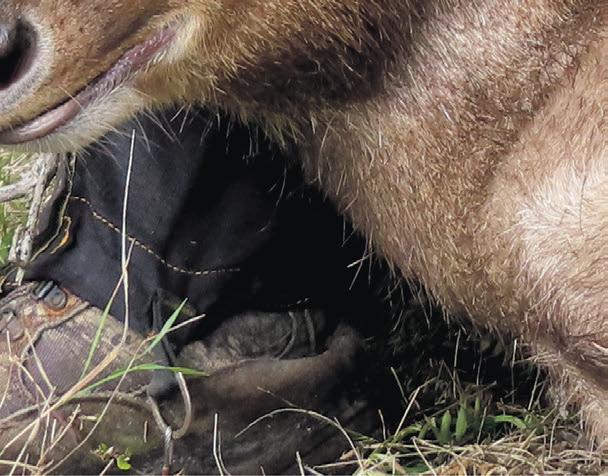






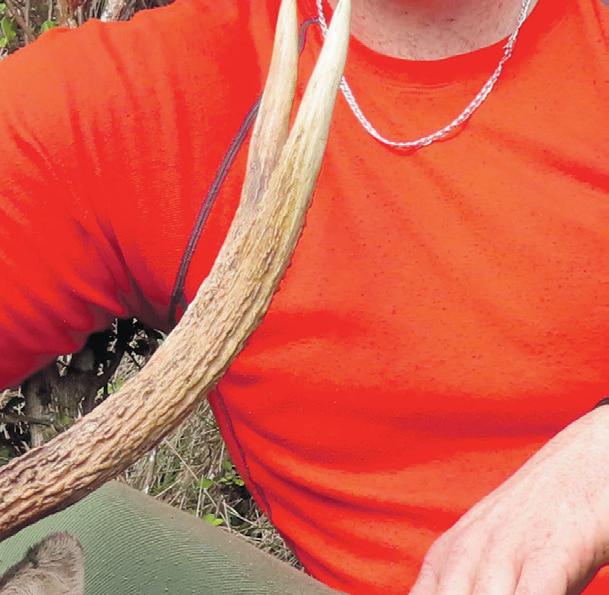





Although hunters, such as John Tomlinson, help keep deer numbers in check he stops short of calling them ‘pests’.
“Deer and all other game animals (including Himalayan tahr, chamois and wild pigs) should be treated as a valued resource. I don’t see them as pests, such as rabbits, mustelids (stoats, weasels, ferrets) and possums,” the Mercer lifestyler says. “But if deer or game animal numbers become too high, there could be less than desirable e ects on our native environment.”
John (who works for Winstone Aggregates) is NZ Deerstalkers Association’s (NZDA) South Auckland branch secretary. The organisation represents hunters, providing training, advice and camaraderie.
“The NZDA works with foundations, adopting the whio (blue duck) as its national conservation project and the NZ Game Animal Council to help ensure [deer numbers are] managed. At a branch level, we are your local hunting club, protecting hunter’s rights and big game animals for generations.”
The recent roar (late March until late April) has seen hunters head for the hills as male deer become more vocal and easier to locate during this time.
“During the roar, male red deer antlers are hard, so they’re a popular target for trophy hunters. Hearing the roars and the opportunity to hunt large-antlered stags make it a popular time,” John explains. “But males are in hard antler throughout winter and seek warmth (basking in the sun on the north faces) while being more sedentary. In summer, they are usually well fed and in good condition, so there’s more meat to harvest.”
Born and raised in Drury, John began using an air rifle (under close supervision) aged 15, followed by shooting possums on his family’s farm. A local clay bird competition took his love of hunting to a new level.
“I nabbed a nice shotgun bag as a prize and decided I should probably purchase something to go inside it,” he recalls. “That prompted me to obtain my licence but it took a few years of hunting (more like ‘spooking’!) deer before I finally got my first one.”
A rusa deer (pictured) is chief among John’s trophies. He credits advice from NZDA members and quality equipment in securing this elusive prey.
Stricter firearm laws under the Arms Amendment Act 2019 have their benefits, but they should not hamper hunters, John Tomlinson from the New Zealand Deerstalkers Association (NZDA) contends.
“It took many years of searching because rusa are [rare] in NZ and inhabit terrain that’s pretty much vertical in places. So much time is spent scoping out vantage points, faces, clearings and slips. I tend to focus most e ort on harder-to-shoot species, but I don’t discriminate; if I’m after a bit of meat or don’t want to travel too far, a friendly farmer might let me access some fallow deer.”
The hunting experience provides the thrill, but the proof of the pudding is, well we all know how the rest goes!
“Being out in nature, testing skills and using all my senses is mentally cleansing, securing meat for the freezer or a nice set of antlers is the cherry on top. The journey from hillside to plate gives a deeper connection to food,” John says. “I wouldn’t call myself a ‘hot shot’ in the kitchen, but I have my moments. I’m experimenting with venison jerky, which is proving popular. It’s rewarding to enjoy a meal you’ve located, shot, processed and cooked yourself.”
Deer aren’t the only animals in John’s sights.
“I’m also into duck shooting. I live opposite a Fish & Game wetland so it’s handy to pop over the fence for a shoot during duck season.”
Realistically, John’s ultimate quarry would be a mature Wapiti Bull, however this is not his dream target.
“A Fiordland Moose – they might still be out there!” he laughs. “The last confirmed photos were taken in the 1950s and DNA evidence, apparently, shows they were still around in the early 2000s. However, if I ever came across one, I’d probably shoot with my camera instead.”
“The new legislation has made it harder as the licensing process requires more stringent background checks. This isn’t necessarily a bad thing, but it appears to be under resourced resulting in extremely long wait times,” he explains.
“There are also proposals [to] increase licence costs. This is likely to lead to a reduction in the number of hunters nationwide.”
John also points out that, to some Kiwis, hunting is not just a sport, they rely on it to support their families. In addition, stricter, more expensive licensing could backfire in terms of preventing crime by stoking the fires of a ‘grey market’.

However, the NZDA is making e orts to achieve a better-balanced outcome with regards to hunting and firearm legislation.
“The NZDA and other hunting organisations continue to work with government to ensure the interests of hunters and other shooters are represented while protecting traditions and heritage, so hunting remains a cherished pastime and a valuable source of food,” John adds. “And, because we are willing to [control deer and other species] for free, why not support hunters?”

Increasing firearm licence fees will come at a cost to native species as well as farmers and hunters, the New Zealand Deerstalkers Association (NZDA) believes.

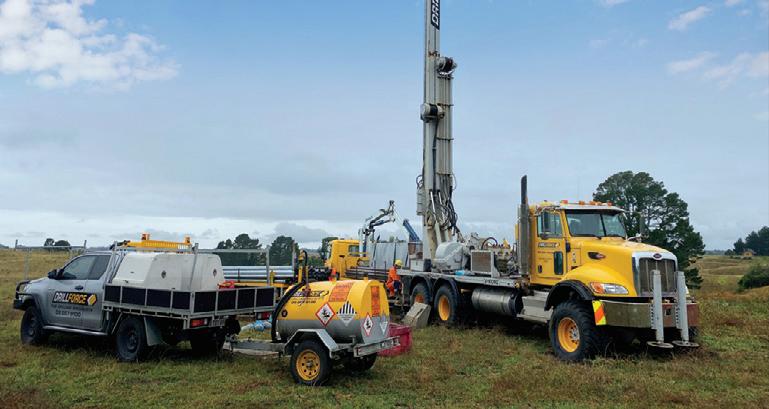

“A firearms’ licence is $126.50 but that is set to increase to somewhere in the order of $700-$1000. This means the average person won’t a ord a firearm, they won’t get into the sport of hunting, or they may give it up [as] una ordable,” NZDA’S Gwyn Thurlow says. “That is a huge risk to biodiversity and public safety.”


Legislation introduced after the Christchurch terror attack has seen the NZ Police ‘under the gun’ processing licences and fees have not increased since 1999. However, increased fees now may impact another government aim, protecting native ecosystems.
In addition, higher fees could levy
further strain on ‘the backbone of our economy’ (farmers, according to Agriculture Minister, Damien O’Connor) and unfairly target people dependent on hunting to provide food for their families, especially relevant as government attempts to tackle the ‘cost of living crisis’, Mr Thurlow contends.
“Firearms are used for farming, pest control and hunting purposes [including in] communities hit hard in
recent times,” he adds. “Using firearms is now a privilege under the Arms Act but [until now] it has not just been accessible for the rich and privileged. We have a tradition of all Kiwis being able to hunt food as a fundamental part of our culture and tradition.”
For more about the role hunters play in controlling ‘pest species’ and possible impacts of licence fees, see pages 10-11.
With hunting season in full swing, the FIREARMS SAFETY AUTHORITY (Te Tari Pūreke) outlines its most important ‘aims’.

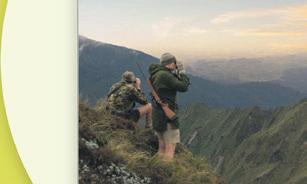






Hunters must be up to date with changes to storage and transport rules for firearms and ammunition. While the Secure Storage and Transport Guide (www.firearmssafetyauthority.govt.nz) provides detailed advice, here are a few key points:
Ammunition must be stored in locked containers. It can only be kept with firearms if secured in a gun safe with a separate, lockable compartment, each requiring a di erent key. Keys must also be kept separate, not on the same ring. If a safe doesn’t have a separate, lockable compartment, store ammunition in its own, locked container or stout, locked cupboard.
Firearms need to be inoperable during travel and, ideally, concealed from view. This means removing the bolt (or another essential part), applying a trigger or cable lock (if parts can’t be


removed) or transporting the firearm in a locked case. Ammunition must be stored separately and securely in a locked glovebox or similar.
Once you’ve finished using a firearm, lock it away! Never leave unsecured firearms in vehicles, sheds or homes. The only exceptions are: if you’re using the firearm on farm for farm-related activities, or undertaking legally authorised hunting or pest control (such as by a regional council employed pest controller) and the firearms’ licence holder is in the immediate vicinity.
In some cases, inoperable and secured firearms may be left in vehicles unattended – when taking a break (of up to an hour) during a journey for hunting purposes, for example. However, vehicles must be locked and licence holders need to stay nearby while meeting further conditions as outlined in the guide. Firearms and other arms’ items must never remain in vehicles overnight.

Rule 1: Treat every firearm as loaded
Rule 2: Always point firearms in a safe direction
Rule 3: Chamber a cartridge only when ready to fire
Rule 4: Identify your target beyond all doubt



Rule 5: Check your firing zone
Rule 6: Store and transport firearms and ammunition safely
The seven rules of firearm safety have also changed. Get ahead of the changes through the Firearms Safety Code. The book can be purchased or downloaded for free via www.firearmssafetyauthority.govt.nz.



firearms
Rule 7: Avoid alcohol or drugs when handling firearms



A RAT could be just what the vet ordered! A new rapid antigen test is being developed to provide diagnosis of a devastating livestock condition, Facial Eczema (FE).
“Farmers can test through blood samples taken by vets but it is expensive and time consuming,” Tokaora Diagnostics’ Frey Livingston says. “With our solution, they will be able to do the testing themselves, quickly and easily.”
Rapid detection by farmers (as well as vets) should result in quicker treatment for animals, including cattle, sheep, goats and deer.
Tokaora Diagnostics intends to test a prototype on dairy cattle with assistance from Ministry for Primary Industries’ (MPI) funding. Should it prove successful, the RAT will reduce financial losses (estimated to be more than $270 million annually in New Zealand), MPI’s Steve Penno expects.

“FE is a disease of the liver and often doesn’t show physical symptoms until it’s too late to save the animal. With climate change, it’s expected to get worse as toxic spores that cause the disease are more likely to grow in warm and humid conditions. There’s no cheap, on-farm diagnostic on the market so we’re supporting Tokaora Diagnostics to take their proof-ofconcept test to the next stage.”
Results from a new survey should provide a clearer picture regarding the use of modern technology on the farm front, as Callum Eastwood from DairyNZ explains.
“[The survey] looks at what technology has been adopted in the past five years. It will be interesting to see the comparison [with previous research] and what innovative farm technologies have recently been
E orts to improve rural productivity and sustainability topped the agenda at the Life Sciences Summit, March 22-23.
“Our objective is to recognise the advantages in life sciences when complemented with biotech,” BioTechNZ’s Dr Zahra Champion said shortly before the summit. “New technologies [for] animal health and sustainable food production are helping reduce Aotearoa’s
carbon footprint. They are the foundations for life sciences to be a jewel in [our] economy.”




The summit also focused on attracting more people into the biotech sector.

“There is further support needed to access and train more support for this important work and, for New Zealand, the talent shortage is severe.”
For more information visit www.biotechnz.org.nz.
adopted by farmers,” he says. “The last survey, in 2018, highlighted that rotary sheds were significantly more labour e cient, being generally newer, larger and having more technology incorporated. It also showed investment in information technologies (such as milk meters, stock weighers and detection systems) have, historically, been low, so we are keen to see if that has changed.”
This year’s survey involved 500 dairy farmers from across the country.
“We appreciate the support from farmers who participated in our survey. [It] will help us further our understanding on current technology adoption and farm practices,” Dr Eastwood adds.
Results are expected to be released in May and made available online via www.dairynz.co.nz.
It’s a grim picture, one of: ‘rusting machinery, a degraded environment’ and ‘rundown farms sold o for carbon credits.’ However, Dr Paul Henderson asserts New Zealand can avoid such a fate, producing more from less, by better embracing Artificial Intelligence (AI) in agriculture.
“By 2050, agriculture production will need to increase by 70 per cent to accommodate the growing population. Current farming methods are not up to the task. We need innovation,” he says. “AI gives us the edge and will cement our place at the forefront of global farming.”
Released through the Maxim Institute think tank, Dr Donaldson’s comprehensive paper (titled: At the Cutting Edge) is accessible in full via www.maxim.org.nz.
Much has been made of cutting-edge technology for use in the primary industries. Recent studies and new innovations are changing the face of farming.








Because goats aren’t exactly fussy eaters, ensuring they receive the best possible nutrition is essential, as Dr Jennifer Stone BVSc (Dist.) reveals.

Goats are ruminant herbivores, although they are browsers rather than grazers and as such their feeding behaviours and needs di er to those of sheep and cattle. Goats prefer to browse higher o the ground and eat plant species such as shrubs, bushes, trees (including willows, tree lucerne and poplar), as well as forage crops (sulla, chicory and plantain) and tall, mature grass, as opposed to short, green pasture. However, they will still eat a lot of grass if that is all that’s available to them.
High bre diets, low in carbohydrates and high in tannins (a stringent compound present in varieties of bark, wood and certain species of browse plants), are ideal for goats. ey can su er due to lush pasture, high carbohydrate pellets, grains and a lack of bre. ese predispose them to laminitis, urinary crystals, poor gut motility and digestion, heavy gut worm burdens and mineral de ciencies.




Good quality hay: this should be provided year-round unless other tall, mature grass and browse materials are available to fulfil goats’ fibre requirements


Browse or forage: include tall, mature


Check our Guide to Poisonous Plants
grass, leaves and branches of other non-poisonous plant material. Feed using various types of forage, to keep goats’ lives interesting, and aim for high-tannin species to help prevent gut worm burdens, bearing in mind that some plants are poisonous to goats. Check our Guide to Poisonous Plants (at www.franklinvets.co.nz) and, if you’re unsure whether a plant is safe, do not feed it to them!
Concentrates (grains or pellets): quality goat pellets can be considered a staple part of their diet and helps prevent mineral or vitamin deficiencies. Do not exceed label recommendations and monitor for lameness as some goats will react to high carbohydrate content, especially when coupled with lush spring grass. However, avoid feeding concentrates to wethers that have been castrated when under 12 weeks old, unless this becomes essential, as it can lead to urinary blockages.
Water: fresh, clean water should always be available to goats.

When making any changes to a goat’s diet, do so slowly, over the course of two weeks. If you’re unsure, contact your vet about goats’ nutritional requirements and con rm whether any additional supplements are needed.
Facial eczema: spore counts are still high so protect sheep, cattle and alpaca with zinc – boluses, pellets or oral zinc oxide











Faecal egg counts: run faecal egg counts every four weeks during autumn. This will confirm if alpaca, goats, and sheep (under two years old) need drenching. Look out for pale conjunctiva (anaemia) during warm, wet weather, especially after a little rain, and be sure to use a multiagent oral drench

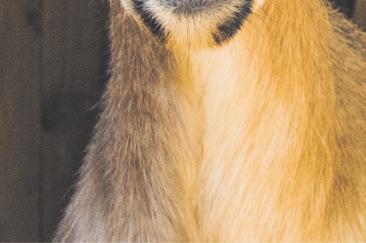

Vaccinations: goats, alpaca and pigs require vaccinations twice a year. If vaccinating goats four weeks ahead of kidding, it’s likely that their biannual booster is due


More than a thousand dead birds at the Whangamarino wetland (located near Te Kauwhata) have resulted from an outbreak of avian botulism. This should serve as a wake-up call to Waikato Regional Council, Fish & Game NZ’s David Klee asserts.

“Fish & Game, the Department of Conservation [and others] have recovered close to 1,500 dead birds and rescued hundreds of sick ones from the wetland,” the Auckland/ Waikato game bird manager says. “This is an internationally significant wetland supporting an array of habitats and life; it’s been soul-destroying to be surrounded by death and decay.”
Poor water quality and changes to water flows contribute to low oxygen levels. This helps create the perfect conditions for bacteria, which produces a toxin killing fish and birds. Diverting water from Lake Waikare into the wetland as part of flood control e orts is likely to have aggravated the problem, Mr Klee contends.
“Botulism is symptomatic of severely degraded ecosystems and this area is being adversely impacted by human activity. While the flood events this summer have exacerbated the issues in Whangamarino, this is not an isolated incident and [outbreaks] are increasing in ferocity. It really is ‘ambulance at the bottom of the cli ’ stu . Until we see a huge shift in how we treat our freshwater environments, these
situations will continue to occur.”

Council must up its game, the organisation’s chief executive, Corina Jordan, adds.
“There have been long-term systemic failures in freshwater policies and a lack of implementation that have caused severe degradation in our freshwater ecosystems. While there’s no quick fix, the Waikato Regional Council needs to take a really hard
look at how the system is managed and limit discharges into these waterways.”
Waikato Regional Council has been put on notice about water quality by Fish & Game before, including through an open letter by Mr Klee. To read his sobering account, published in Rural Living’s Feb-Mar 2022 edition, see the ‘past issues’ section of our website, www.ruralliving.co.nz.

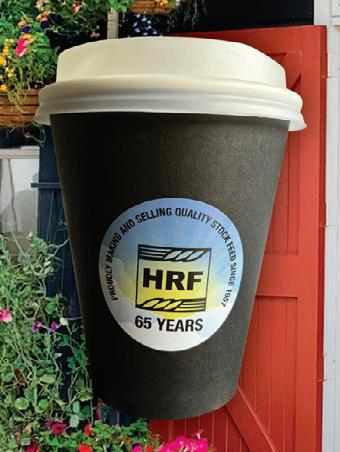


Auckland Council reached a landmark decision in late March, voting to end its association with Local Government NZ (LGNZ). Mayor Wayne Brown believes this will save more than $600,000 annually. While the vote passed by 11 to 10, Franklin Ward Councillor Andrew baker says the move could adversely impact rural Auckland.

“Being part of the rural and regional sectors of LGNZ, which have significant overlap with the provincial sector, has involved [Auckland Council] in discussions and LGNZ projects such freshwater management,” Mr Baker says. “We can learn from how some smaller councils do things, especially the rural ones. Conversations with other councils through LGNZ enables knowledge [to be] shared. We will miss those opportunities.”
Some have drawn parallels with the


UK’s ‘Brexit’ from the European Union, but this ‘Aux-it’ doesn’t involve the breaking of anywhere near so many ties. E ectively, LGNZ is a collective representing councils while connecting local and central government, but it comes at a cost. Despite this, Mr Baker’s objection to the ‘leave’ vote extends to its impact on Franklin’s townies too as, among other things, LGNZ has (literally) helped keep the lights on.






“Urban Frankliners would have benefitted from a change of our streetlights, through a deal brokered by LGNZ. The saving for Auckland was just over $1 million. Now, we will have to either broker our own deal or probably won’t be able to change or improve

our street lighting due to our [current] budget. In general, we miss benefitting from LGNZ services – we are now on our own.”



It remains to be seen whether Auckland remains with LGNZ, or returns to the fold – a compromise could still be reached. Either way, Mr Baker believes the result was not in the best interests of Aucklanders.


“I am not sure what message [it] might send to [central] government and seriously doubt it’s a good way to send one,” he adds. “LGNZ might get a ‘shot across the bows’ but we will try to deal with things on our own when we would usually team up with other councils and LGNZ.”

For the most part, news cannot be served in bite-sized pieces. However, in e orts to serve readers a balanced diet of news (is there any such thing?), we’ve included the following matter-of-fact morsels to chew over.
Farmers nationwide are being asked to pitch in and ‘help a mate buy a gate’.

“We’re looking to alleviate some of the stress that landowners and fencing contractors in cyclone a ected areas will be feeling,” says Craig Wiggins, Fencing Contractors Association of NZ. “If we can help just a bit, that’s what we’ll do!”
Donations will assist with the purchase of materials to construct and repair fences in the Hawke’s Bay during Fencing Days, May 18-19. See www.fcanz.org.nz for details.
A lot of ‘little’ energy can make a huge di erence. Working with charitable trust, Trees for Survival, Mauku School recently secured a $5000 grant from Counties Energy. The school will install greenhouses with seedlings grown by students to be planted at Mauku Stream. Hunua’s Camp Adair and Franklin Active Trails Whakaupoko Landcare also received grants to assist with their good works locally.
Cyclone Gabrielle emphasised the importance of keeping waterways clear, Franklin Ward Councillor Andy Baker asserts.
“During the [Anniversary Weekend] flooding and Cyclone Gabrielle the poor state of some waterways added to problems,” he says. “All landowners, where waterways flow, can play a part to prevent blockages and poorly
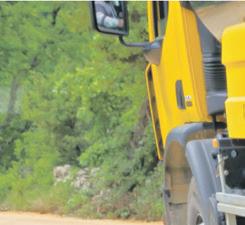
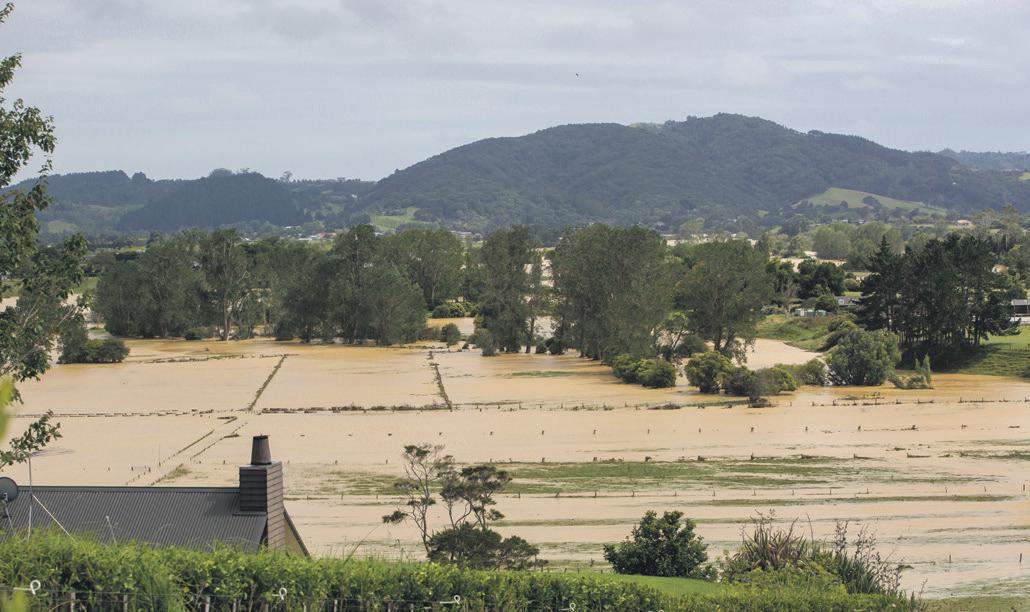

Passengers could put their foot in it as e orts are stepped up to stop Foot and Mouth Disease (FMD) in its tracks.
“We are encouraging travellers to wear closed-toe footwear [as] footbaths won’t be available for those wearing sandals or other open-toe footwear,” Mike Inglis (Biosecurity NZ) advises.

Revised border measures follow the resumption of direct flights from Bali, curtailed due to an outbreak of FMD in Indonesia. The disease could have serious implications for the primary sector should it gain a foothold here.
“Biosecurity NZ takes the FMD threat very seriously, given the damage it could inflict,” Mr Inglis adds.
Visit www.mpi.govt.nz for details regarding border security measures.


maintained areas.”



Mr Baker acknowledged Auckland Council is assessing the stormwater network’s e ectiveness with upgrades to culverts in Paerata and Pukekohe under consideration.
Search ‘private watercourses’ at aucklandcouncil.govt.nz for more information about landowners’ obligations and advice.






Bee colony losses for the past two winters are almost identical (at 13.5 per cent) to last year, but a certain malicious mite is taking a larger bite out of the apiculture industry, especially in the upper North Island.

In contrast to queen problems, wasps and suspected starvation, the voracious varroa mite caused 20% more damage in 2022 than in the previous year.

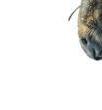

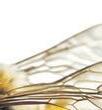
Although treatment is available to stave o varroa mites, vigilance is crucial, Apiculture NZ advises, so beekeepers nationwide must keep a keen eye on their hives. To view the findings, or for further advice, see www.apinz.org.nz.




OFF

PGW Pioneer Ground Works have many years of practical experience in delivering bitumen solutions for carparks, farms, airstrips, truck yards, subdivisions, roads and driveways.


We specialise in bituminous surfacing such as prime coating and emulsion spray seals/






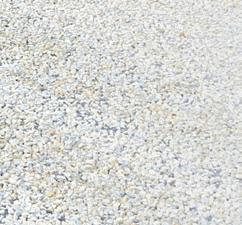






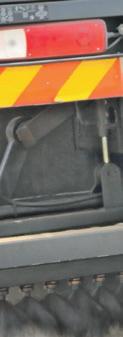



chip seal. Our team can also repair existing or damaged bitumen surfaces.
We can perform a 2-coat seal application of bitumen for durable surfaces that can handle wear and tear.
PGW also offers aggregate, cartage, spreading and bitumen spray truck operating services.






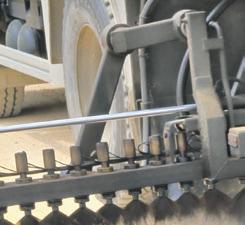


WHATEVER YOUR BITUMEN NEEDS SIMPLY GIVE US A CALL, PGW HAS YOU COVERED







A right rural a air, the NZ Rural Games again saw sportspeople from various of codes in action. Held as our previous issue was being printed, the annual event resulted in many a champion crowned. Games’ disciplines tested a diverse range of skills covering such rural activities as fencing, sheering, timbersports, cowpat throwing and tree climbing to name just a few. A full list of winners is available online at www.ruralgames.co.nz.

Mangatawhiri’s Finja Philips claimed one of the major accolades at the Auckland/Hauraki 2023 Dairy Industry Awards, named the region’s Dairy Manager of the Year.
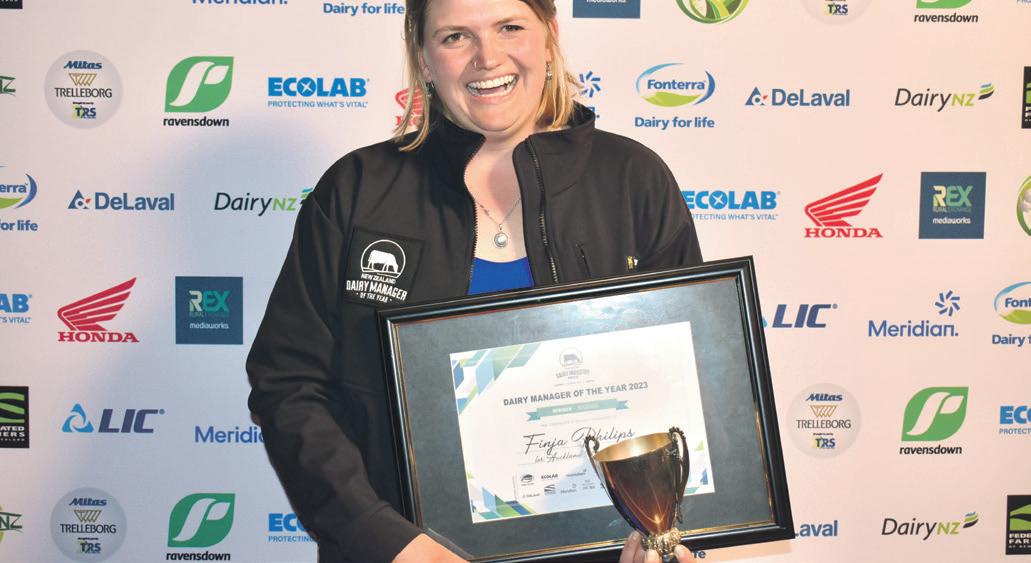
“When I was at school, we were all proud to be dairy farming kids but nowadays people feel sheepish and like they can’t tell their story. We have to turn this around and we have to show our dairy farming families that is a career to be proud of,” the former
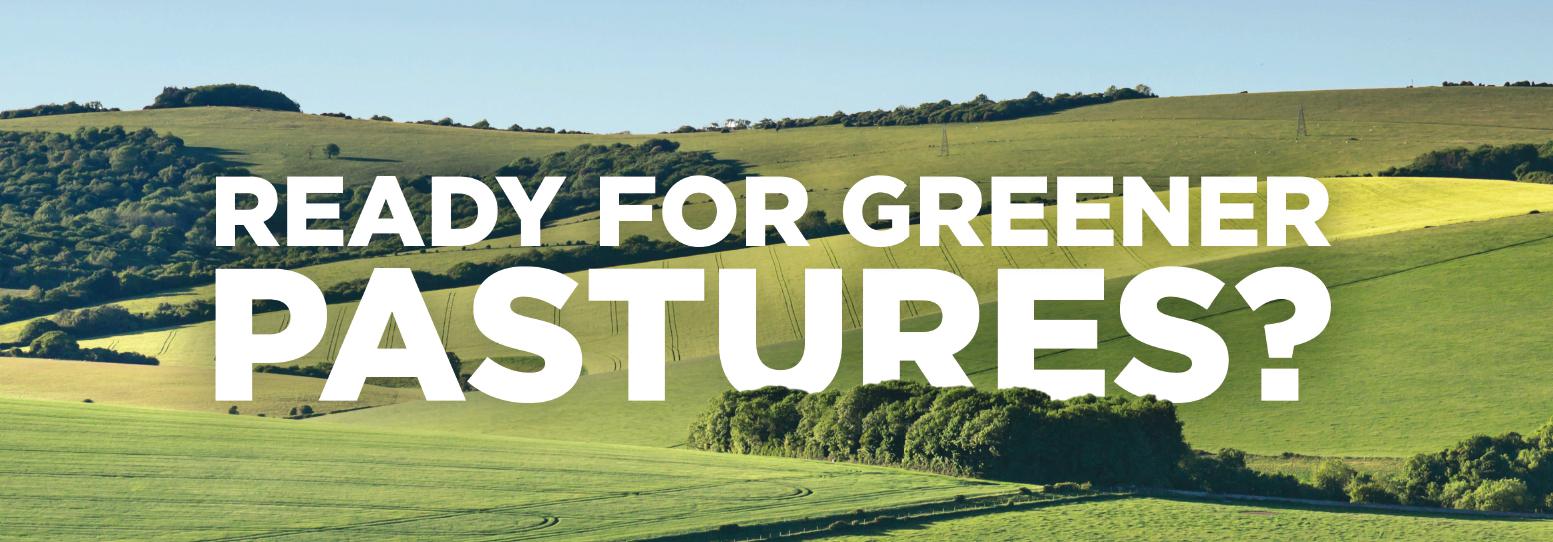
vet says. “I want to help to pave the way for other women to be sole dairy farmers if their partners work o -farm – women can do anything!”
Maramarua sharemilkers, Crystal Scown and Bailey McShe rey claimed two merit awards while Rita Je rey (Patetonga) secured the competition’s other major award, named Dairy Trainee of the Year.

Attention now turns to national honours to be confirmed May 13. See www.nzdia.org.nz for details.










Congratulations to Core Drill Block for nailing down a recent win at the annual SiteSafe Health, Safety and Wellbeing Awards. The Papakurabased company topped the Safety Innovation (small to medium business) category for an inspired drill design.

“This is an innovation to solve challenges of starting a concrete core drill neatly and safely,” judges’ notes confirm. “The solution is simple, clever and elegant.”
For details see www.sitesafe.org.nz or www.coredrillblock.co.nz.

North to South, we have diffferent skills, and collecctively we know this country better than anyone The price of a paddock or the worth of a villa, we know the buyers of New Zealand, and everywhere you find us, you'll find our experts and high achievvers So contact your local Bayleys office for an altogether better experienceFinja Philips
Locals and others in the primary industries have been on a roll (and on the honour roll) recently, or looking ahead at contests/rewards to come, including:
Damien O’Connor is intent on taking food production to new heights! Indoor, vertical farming produces crops in half the time of traditional methods, using up to 95 per cent less water while being pesticide-free and more climate resilient, he asserts.
“As farmers and growers around the world grapple with less predictable conditions due to climate change, it’s key that we shore up our production and food security,” Mr O’Connor said during a recent visit to Waikato’s Greengrower Controlled Environment Farming. “Because Greengrower’s systems are controlled environments, there is also no soil degradation, chemical runo , or pesticides required. Produce is ready to go from plant to plate without needing to be washed.”
Greengrower has been assisted through the Sustainable Food and Fibre Futures fund.





“[It] has successfully taken leafy greens to supermarkets with positive consumer feedback. The next phase of investment seeks to expand the system to other types of crops.”
Among others, the primary sector is set to benefit from improved satellite positioning through the Southern Positioning Augmentation Network (SouthPAN), our Land Information Minister expects.
“SouthPAN will help farmers and growers with precision through application of inputs,” he said. “[It] enables [them] to use invisible fences and drone-based spraying to manage livestock and crops.”




Increasing the accuracy of positioning systems, SouthPAN will aid other services and industries, from search and rescue to Uber.

A new bill could prove exciting for organic producers.
“The Organic Products and Production Bill will give businesses the certainty they need to continue to invest in our growing organics sector,” Mr O’Connor said. “Consumer demand for genuine and certified organic products is significant and customers

around the world are becoming increasingly discerning about how their food is produced.”


A new national standard is also being devised to clearly define ‘organic’ with regards to food, beverages, plant and animal products.






July’s Comprehensive and Progressive Agreement for Trans-Pacific Partnership (CPTPP) Commission is expected to result in rich pickings for farmers and growers.
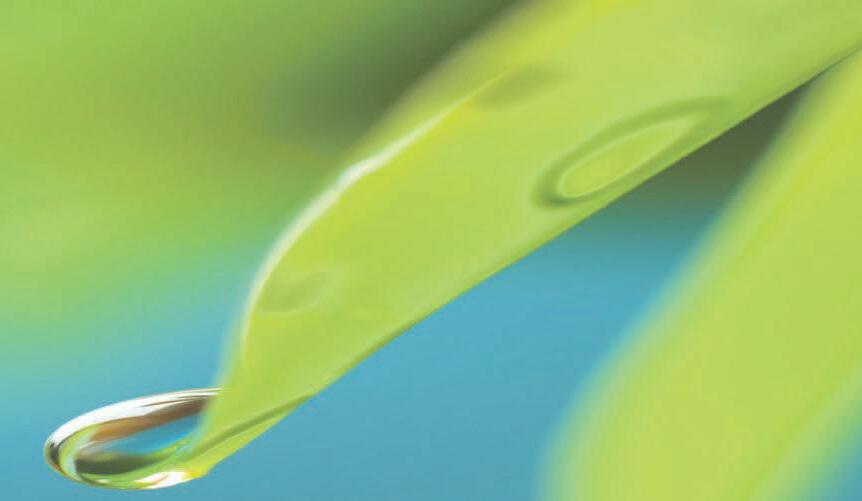
“CPTPP economies represent $17.3 trillion of global trade and our membership has saved Kiwi businesses $300 million in tari s in just the first two years,” said Mr O’Connor, who also serves as Minister for Trade and Export Growth. “In the primary sector there have been massive gains –exports such as kiwifruit and wine saw all tari s eliminated immediately.
“Trade creates jobs, and boosts our economy. One in four New Zealanders’ jobs depend on exports.”

Held in Auckland, the Commission will be chaired by New Zealand.

Recent reports from the desk of our Minister of Agriculture (among other things), Damien O’Connor, show sustainability remains a focus of government support to the primary industries.


 By Ditch Keeling, Coastal Pest Solutions
By Ditch Keeling, Coastal Pest Solutions





Gidday folks. Our 17th year in business has brought about a lot of reflection, especially now I’ve worked out it’s 29 years since I started my career as a young trainee hunter on DOC’s [Department of Conservation] Rangitoto possum and wallaby eradication programme – how time flies when you’re having a ball!
I still remember, like it was yesterday, arriving one Monday morning at the huge old homestead at Home Bay (Motutapu) to start a 12-month contract. Little did I know it would become my home away from home for the next decade, let alone that my contract was the start of an 18-year term as a fulltime hunter specialising in multi species island eradications.
The 1990s on the islands was a very good time for me. My senior colleagues were, mostly, former NZ Forest Service cullers, rangers and woodsmen – you could not meet a more colourful mob, all lace-up gumboots, black woolly singlets and obligatory Swanndris. They were professional bushmen to the last man; superb hunters, excellent cooks and downright hilarious, making for the most fascinating company.
I came into my initial contract knowing almost nothing, although I thought I knew it all! Working alongside men of this calibre quickly taught me how little I knew – the first ten years, I swear I did nothing but learn. I think that’s why I ended up in the game for keeps, because it was the first job I had where the learning never stopped. There was absolutely no time for boredom while learning how to find and trap a dozen di erent species, how to skin and tan them, how to keep that knife super sharp – I have plenty of scars to prove it!

Almost all the old boys are gone now but I think of them often. Regularly, I’ll bowl a mob of goats and recall my first big goat jobs.
Sometimes we’d be pulled o the island for breaks – I later discovered they were worried we’d get a bit ‘troppo’. I’ll never forget our massive pack of dogs on the DOC boat as we headed to Auckland for a bomb up – I still get excited thinking about it!
I fell in love with the islands over the years and got to work on many of them. We took rabbits o Motuihe, wallabies o Kawau, cats o the Chathams and rabbits from Great Barrier. I have so many memories, including finding ancient stone tools last touched by pre-European Maori. The job appealed to the beach-
comber in me and the work, overall, has been nothing short of an actionpacked adventure.
I never wanted to leave DOC and the people will always be like family to me. However, as I had a young family at the time and pretty poor wages, I began selling my services privately. I was so busy in that first year that I simply had to leave my ‘day job’, but it was incredibly hard to do. The old boys said: “You’ve gotta make a go of it, man!” So, 17 years later, I have no regrets whatsoever.
Those early days gave me the best grounding for a lifetime in the field, incredible memories including of amazing individuals and beautiful animals. On reflection, after 29 years on the gun, I really feel like one very lucky bloke.












The 2022-23 season has seen thoroughbred racing welcomed ‘home’ to Pukekohe. So, it’s not surprising that many fans, including Rural Living’s Wayne Martin and hometown (and country) specialists from Barfoot & Thompson, Jason Tabrum and Luke Jupp, have been o to the races. While the Barfoot & Thompson Auckland Cup Day was a fitting conclusion to the summer’s racing season, there’s more to come down the track in autumn. Raceday results, as well as a full schedule of races to come, are accessible online at www.pukekohepark.co.nz.


























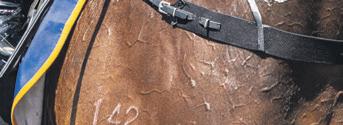














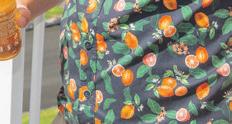
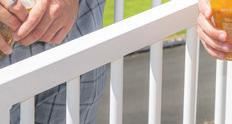


















Every homeowner wants to enjoy a feeling of pride and comfort when driving up to their home not just for the first time, but every time. And, that’s exactly what the team at Homes by Nest works hard to create – even the name reflects that sense of warmth and snugness which envelops homeowners when they walk through the front door into their very own living space.



What a month it’s been!

I thought the past few weeks would have been all about issues with my teeth, but this was only a small part of my news for the month. As mentioned in my last column, I required teeth extractions and a new plate. This process went amazingly well – all my earlier fears were certainly quashed. I am still getting used to the plate, but I guess it’s just a matter of time.
Before the dental work, I received a call from a friend who said he was just popping over to visit. As he’s Australian, I thought he was ‘popping over’ from there but he was flying in all the way from Charleston, North Carolina. I was looking forward to seeing him after 30 years, but it wasn’t the best timing as he arrived the day after my teeth were extracted –currently, I’m referring to everything date-related in reference to ‘that’ event! I didn’t know how I would be with (maybe) no teeth but I realised I just had to grin and bear it.

Later, my grandson (Jamie) messaged to say he was also flying in from the United States. However, as he arrived the day before my dental work, his timing was much better. Jamie is always a joy and, as he’s the chef in the family, he prepared a lavish ‘last supper’. What a busy few days those were; thankfully, I can now move on from my teeth saga!





It was wonderful to have our friend (Phil) staying because he wanted to reminisce and visit places that were important to him many years ago. This gave us a good excuse to visit places we hadn’t
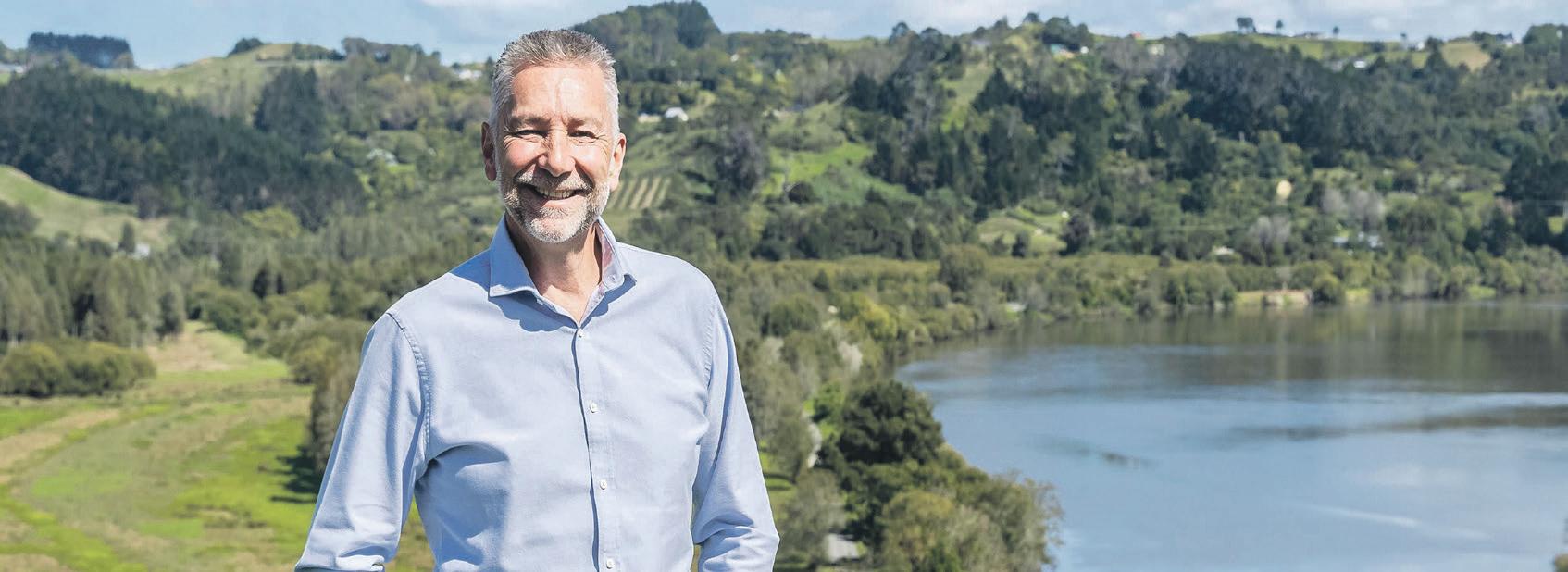
seen for years. One day, we drove into the city and walked around the Auckland Viaduct – it was only partly developed back when Phil lived here. As he had known my mum, he wanted to visit where she lived in St Heliers. My old family home is not as it once was – it now has three huge townhouses on the land and a huge Oceania retirement village being built over the road. How things change! We also met up with mutual friends for a catch up at Drury’s Red Shed Palazzo, which was fabulous.
Then came Easter and what we thought would be an almost empty house. However, Brian wanted to file all his family history, so Petrina (daughter) came over on Good Friday to make a start on it, which was ideal because she is so well organised. Later that afternoon, her husband Steve joined us and they made a roast lamb dinner. Special flavours were added as they competed to see if they could outdo Jamie (the chef, mentioned above). They couldn’t win but Brian and I definitely enjoyed testing their attempts.
Hopefully, I’ll have more to share about great company and good eating next time – and less about bad teeth!















It’s easy to be nostalgic at a drag strip, seeing as the races are over so quick! However, amid the roar of engines and haze of tyre smoke, our hotshot shutterbug was quick with the clicks paying homage to history with black and white beauties of some smokin’ ‘strippers’. To view these and many more of Wayne Martin’s photos, taken at Meremere Dragway’s recent Nostalgia Drags, visit www.ruralliving.co.nz.




















The recent end to daylight saving may still have some of us at a loss, but gaining or losing an hour here or there is a mere drop in the bucket for some of our region’s longest serving businesses. In this section we pay tribute to businesses that have become local institutions, some after just decades and others for more than a century. While good things take time, a commitment to great service and expertise has ensured the endeavours of the people behind these organisations has endured, becoming time well spent.

Animal Stuff has withstood the test of time! Since opening in 1989, Animal Stuff has been supplying the greater Franklin area with quality animal and pet feeds while supporting many local schools and pony clubs. Our expanded range now includes feeds and supplements for household pets and we stock a wide range of brands. We have four stores conveniently located in Takanini, Drury, Karaka and Waiuku – come in and speak to our experts about feeds and other supplies for your ‘best friends’.

34 YEARS
Jennian Homes Franklin owners Vincent and Michelle Costello have been building quality homes in the Franklin region for almost two decades. Their team of experts and local trades are committed to building well considered homes for our families in Franklin. Jennian Homes is NZ’s most awarded builder in the Registered Master Builders House of the Year awards, and they complete all of their homes to the same award-winning standards of design, quality and workmanship. Jennian Homes Franklin consider everyone they work with, from suppliers and contractors right through to their customers, as part of their Jennian Family.

YEARS




We are proud to continue service to the widely diverse South Auckland community for over 60 years. At Fountains, we believe we have a duty of care, not only to our families but also to the community we are part of. We aim to build awareness of the work we do and seek to give people a better understanding of the choices they have available. Our qualified experienced team are available any time for advice and support. We continue to care after the service with complimentary bereavement support for our families.




50+ YEARS
Socialising at Pukekohe’s Franklin Club is routine for many Pukekohe locals with long-standing and new residents having been welcomed into its clubrooms and activities for the past 100 years. Offering a contemporary restaurant, (dinner, 6 nights; lunch, WedSun), conference rooms, gaming room, snooker and darts, bar and lounge, there is plenty to please. Enjoy weekly members’ draw, raffles, special milestones, entertainment and fun events. Ask about our membership, join today, enjoy the best of company!
DW Homes is proud to be the second-longest running volume home builder in the Franklin region. Since it was established in 2004, they have built a reputation for elegant design, impeccable craftsmanship and a commitment to quality; building homes which stand the test of time. With options available to buy, build, and invest, whether that be a turnkey home, house & land package, or a custom design & build; DW Homes will work with you to secure your future.


For more than 170 years, The Kentish Hotel has been at the heart of Waiuku life. And yet, despite being continuously licenced since it was constructed by Edward Constable in 1851, this popular public house has moved with the times, with additions including the recent Portside Bar area overlookingthe harbour and Tamakae Reserve and (of course!) a regularly updated menu. Serving a slice of local history in the heart of Waiuku with every order, The Kentish has plenty to offer today’s patrons hosting contemporary events and more.







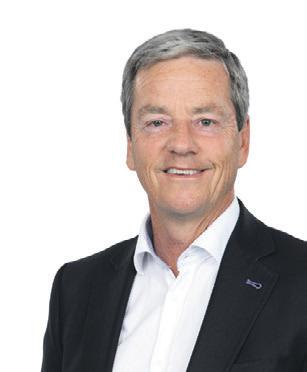

News (in mid-March) that La Niña is over after three years will be a relief to those a ected by the recent flooding and cyclone. This weather pattern accounts for why it has been so wet across the North Island, especially the north and east.
It’s been a long road home for Wilfred Wagener. Killed during the Battle of the Somme, this First World War soldier has been buried in France since 1916, but his portrait and medals were donated to the Tuakau and District Museum.
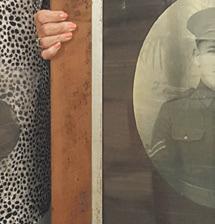
Through extensive research, the museum team finally indentified the former Waikato blacksmith’s descendants, living in Northland. Lance corporal Wagener’s items have now been claimed by the wives of his grand-nephews, Sue and Catherine Wagener (pictured above).


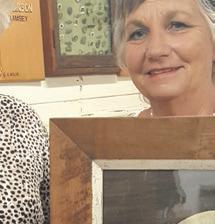

To read more about LCpl Wagener’s journey search ‘Tuakau and District Museum’ on Facebook.

Whether we’re hit by a cyclone or just a subpar curry, locals can have confidence that our wastewater system is in fine form following extensive upgrades to the Pukekohe Wastewater Treatment Plant.
“It’s great to see this important project completed,” Andy Baker (Franklin Ward Councillor) said at an opening event last month. “We’re expecting significant growth in Pukekohe over the next 30 years – the upgrade enables the community to grow and the local economy to flourish.”
The plant treats wastewater from Pukekohe, Buckland, Tuakau, Pokeno and Patumahoe. The upgrades, which began in 2019, double its capacity from 30,000 to 60,000 households.
Following public consultations, the three new railway stations planned for Franklin have been o cially named: Drury Railway Station (Drury Central), Ngakoroa (Drury West) and Paerata. The new stations are expected to open by late 2025, after electrification of the local line is completed.
After the dreadful floods of Anniversary Weekend and the damage wreaked by Cyclone Gabrielle, our communities are in clean-up mode and the recovery process is underway. For some, especially those living across the Āwhitu Peninsula and Port Waikato, this will take months. I have been keeping in close contact with a ected residents in these communities and meeting with various groups on a regular basis.
For families who have had their homes red or yellow stickered, insurance claims could take months to resolve. However, people need clarity around the status of their home with support now, while they wait to rebuild.
It is pleasing that both Auckland Council and Waikato District Council have responded well to the events, particularly the councils’ roading teams, which have dealt promptly with a significant number of slips.
It has also been heartening to see a number of events in our region organised to raise funds for flood-a ected victims, not only here but across the North Island.
My constituents’ clinics are underway again with appointments at the Pukekohe electorate o ce and mobile clinics (Waiuku, Pōkeno and Te Kauwhata) set for May and July. Please call to make an appointment.
We are also holding a luncheon with Sir Don McKinnon (April 26) and Erica Stanford will visit (June 19). And, watch out for my seniors’ afternoon teas during the next few months, held across the electorate. Invitations to these will be sent out in the mail.
I will be holding mobile clinics for constituents on Friday
5 May 2023 in Te Kauwhata, Pōkeno and Waiuku.
For more information and to make an appointment, contact the Port Waikato electorate office: 09 238 5977
Funded by the Parliamentary Service. Authorised by Andrew Bayly, Parliament Buildings, Wgtn.
KC15689-v2

ANZAC Day is a time to remember those who gave so much in conflicts, but we should also never forget the trials of civilians caught up in war either. The last surviving member of his family, Josef did not return to his pre-war life once liberated following the Holocaust; instead, he set about bringing his tormentors to justice, as this riveting true story reveals. A tale of courage and dedication, this book delivers a poignant reminder of the horrors of war.
Josef Lewkowicz: The Survivor | RRP $40 | Bantam Press













Explaining the importance of ANZAC Day to children can be tricky. However, Philippa Werry manages this masterfully in her book – loaded with captivating stories, photographs, paintings, poems, monuments and memorials – which is especially well suited to help young readers comprehend the unthinkable.
Philippa Werry: Anzac Day – The New Zealand Story | RRP $24.99 | White Cloud Books

Many Kiwis foster strong and enduring connections to family origins in Ireland and Scotland, as this book reveals. Drawing on her own family experience and various case studies, Celine Kearney traces how deep our Celtic roots run, touring the country to tell the stories of New Zealanders with cultural ties crossing hemispheres and generations.
Celine Kearney: Southern Celts –Stories from People of Irish and Scottish Descent in Aotearoa | RRP $40 | Mary Egan Publishing

If you want to be frugal, give mum a kiss for Mother’s Day; if you’d rather be kept full, you’d do well to ensure this book goes along with it! Focused on keto recipes, Belinda McDonald’s latest cookbook makes a great second course to her best-seller, Flavourbomb. Proving that a keto diet can be packed full of flavour, Flavour Kiss is a gift that keeps on giving.

Belinda McDonald: Flavour Kiss
| RRP $50 | Penguin






This true story (by former Manukau City councillor, Colleen Brown) knits together quite the… yarn! Showing how the personal tales of ordinary people play a part in major historical events, this children’s book follows the journey of a scarf, knitted with love on a New Zealand farm that’s destined to give comfort to an ANZAC on the Western Front.
Colleen Brown & Emma Lay
(illustrator): Violet’s Scarf | RRP $25

The natural world makes sense for the majority – dogs woof, cows moo, chickens cluck and ducks meow. Wait, something’s a little o there! Inspired by a story from YouTube, this quirky book encourages young children to enjoy learning about animal sounds while also realising that not everyone always marches to the beat of the same drum.

Juliette MacIver & Carla Martell
(illustrator): Duck Goes Meow
| RRP $21.99 | Scholastic NZ

Springing from local (Karaka) roots, BENJAMIN PLUMMER followed a family a nity for sport. Now a journalist working with Rural Living’s parent company, Times Media, this former semi-professional rugby player reflects on the (sometimes) rough ride involved with achieving sporting goals. Ben shares his story.
Contacted by Australian rugby clubs in Sydney’s Shute Shield competition towards the end of 2021, I jumped at the opportunity to play semi-professional rugby. I had just finished studying at university, didn’t have a job and wanted to travel – or so I thought!

Once money was o ered, it clouded my ability to weigh up the pros and cons. I thought I’d be living close to the beach in a beautiful apartment; on arrival, I realised the club resided in Western Sydney, near Parramatta. We had a six-bedroom house in Guildford, which happened to be one of the largest gang areas in Australia – pure luck right?
Rugby in Australia is a private school sport, one of the reasons
rugby league is so much bigger over there. While the players tended to be smaller, not as physical as in NZ, they were fitter.
Overall, I would love to say my trip to Sydney was the greatest experience of my life, but it wasn’t. Rugby became my escape in Australia – my family is close so I missed them from the minute I left until I came back home.
My relationship with rugby has been a bit of a rollercoaster ride, playing since I was five and having the privilege of being much closer to the game than most Kiwi kids. My father, Mark, has been involved with Auckland and the Blues as a physiotherapist and my brother, Harry, has been with the Blues’ squad for the past four seasons.
After I finished school (St Peters College), I planned to stop playing rugby – it wasn’t for me and I wanted to settle into university life. However, when I went for a job at the Waiau Pa Four Square, the owner (Bevan Leckner) told me I could play for Ponsonby if I wanted to, so I decided to give it a go.
With Ponsonby, 2019 was a bit of a breakthrough year for me and I was selected to represent Auckland at the under 19 Jock Hobbs Memorial tournament. This led to more opportunities with the club’s premier side in 2020 and 2021, when the season wasn’t a ected by Covid. I also played in the first (and only) Sky Sport Super Club Rugby U21 Championship.

One of the toughest parts about

rugby is the injuries. These can impact work, school and life in general. Unfortunately, I’ve had absolutely terrible luck! I su ered a shoulder dislocation, requiring surgery and nine months’ recovery, a broken wrist, two patella dislocations and a handful of concussions as well. The funny thing is that all these injuries occurred in the last game of every season, so perhaps my luck could’ve been even worse!
Like many Kiwis, I had dreams of playing in the All Blacks from an early age. My parents even set up rugby posts in our backyard to keep my brothers from damaging furniture and the walls when we were playing knee rugby inside.
However, my aspirations changed when Harry became a professional for Auckland and then the Blues.


Witnessing his trials, physically but (more significantly) mentally, put me o the professional game. It’s one of the main reasons I decided to come home from Australia.
New Zealand is one of the friendliest countries in the world… until you have a poor performance! During Harry’s Super Rugby debut (against the Crusaders at Eden Park), he missed a match-winning kick. The attempt was from, roughly, fifty metres out, but he still copped a lot of flak.
Harry now has four seasons with the Blues and, despite successes along the way, he still receives abuse and even threats. Having said that, I believe the abuse has actually brought our family even closer together.
We laugh at keyboard warriors who write as if they know everything

To read more about the Plummer family’s sporting exploits, see the following e-editions via www.ruralliving.co.nz: Mark Plummer (Jan-Feb 2014), Jo (Dec-Jan 2014) and Harry (South, May 2018).
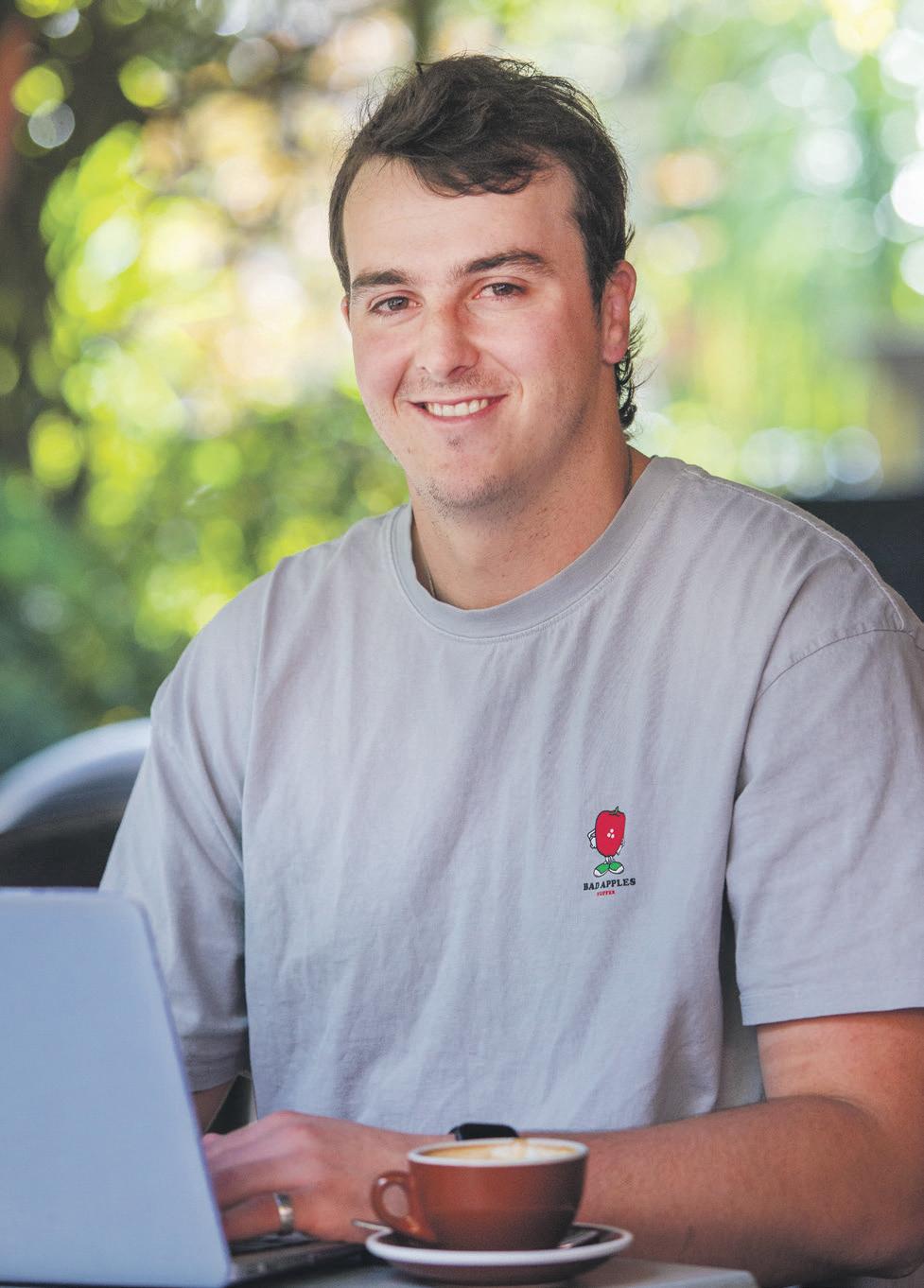
because they played back in their day, but it’s not easy for players. I have now taken a di erent approach to rugby, as a journalist. I hope to use my experiences to be more sympathetic in my approach when covering sport.
As for my playing days, they’re not over yet. I’ve always told myself that once I stop enjoying rugby I will stop playing. The game does come at a cost – it’s a massive time commitment, there are registration fees, fuel costs and balancing work and a social life on top of all that. But I still find playing at club level is a good way to stay fit and active and escape the pressures and stresses of life.

As we head into autumn, Papakura remains the place to be for shopping, events and so much more.
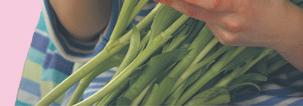










WELCOME: Setting up in the Selwyn Centre (Great South Rd), Complete Legal has become the latest business to join our community. We welcome their team and wish them all the best.














ANZAC DAY: Our dawn parade (from 6am) sees Papakura’s cenotaph take centre stage on April 25. Followed by a civic service (from 9am), local commemorations will help ensure we will not forget those to whom we owe so much.
PAPAKURA STREETFEST: Providing a feast for the senses, the Papakura StreetFest (May 6, 10am-2pm, Great South Rd and Broadway) will see our town come alive with colour on with craft stalls, live bands, facepainting, children’s entertainment and so much more. I would like to thank the Papakura Local Board and all those who have worked so hard behind the scenes to ensure this fun-filled, family event will be bigger and better than ever!
MOTHER’S DAY: Papakura is the perfect place to shop for Mother’s Day. With so many stores from which to choose, our local businesses are sure to you find the perfect gift. And, as we have a wide range of cafes, Papakura is sure see many a toast raised on Sunday, May 14.


Papakura Business Association PO Box 272 1783



Papakura 2244, Auckland Phone 09 298 8996 www.papakura.co.nz
Summer rays can play havoc with our hair, but autumn isn’t loving for our locks, as Natasha Harris from Alberts Hair Salon explains.









Winter may not be here quite yet but it’s coming! Although we can shield our hair from the rain, air conditioning can have an impact, robbing hair of its natural moisture. For this reason, it’s important we don’t neglect our regular hydrating routines, including the use of a quality conditioner.
Easy and stylish, blow waves are versatile and fashionable at any time of year. What’s more, their tussled look never appears out of place when the chilly winds let loose. And, a salon quality blow wave can last for days while saving hours of styling and washing at home. However, this is just one style designed to take us from drab to fab’ during the cooler months – our team will be happy to run through other options.
Aside from styles, many people like to adopt a new season colour. During autumn, chocolate brown, chestnut and auburn are all absolute classics. Although blonde is more often associated with summer, cooler tones can feel fitting as winter sets in while warmer shades (such as caramel or honey) can both compliment and contrast.







Of course, there are many other factors involved when choosing the right hair colour – especially your skin tone – which is why, at Alberts, we are on hand to help. With many years (and many winters!) of experience between them, our team is on trend and ready to work through the options. We’ll find your true colour, one most suited to you while being most suitable for the season ahead.




of the








For enquiries & bookings contact:
Alberts Hair Salon
Shop 2/23 Hall St, Pukekohe
Ph: 09 238 7576



Shop online at: www.alberts.co.nz









Focused on lightening and brightening as we head into the dark days of winter, these products make ideal gifts for busy Kiwi mums.

With the change of season, our skin needs a little extra TLC. Thankfully, JUARA’s Kartini Body Oil (RRP $120) could be just the thing to nourish and nurture our skin at this time of year. Formulated with vitamin rich ingredients, such as turmeric and omega, it’s packed with candlenut oils to help ensure we need not settle for dry, dull skin.
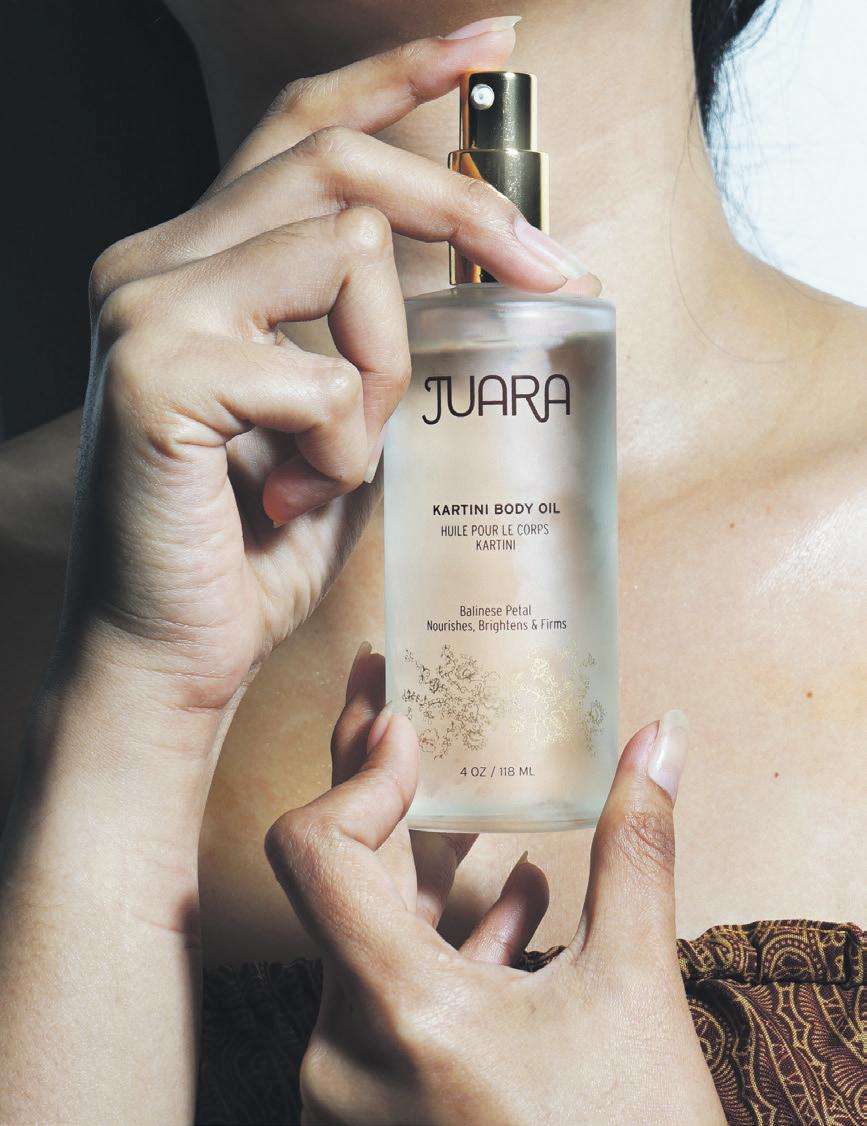




Whether we’re wanting to follow the bleached brow trend or lighten facial or body hair, Jolen’s Creme Bleach is intended to be painless and cost-e ective. In addition, the range’s new Mild Formula version (with aloe vera and less peroxide) is designed for use on more delicate areas and for people with more sensitive skin. Produced for all hair types and colours, these products are quick and easy to apply. Jolen Creme Bleach is available (RRP $12.99) online and at select chemist outlets nationwide.




Scenturie’s award-winning UltraRich Natural Night Cream (RRP $44.99) is a luxurious blend. Featuring pure botanical plant oils, carefully selected for their deeply moisturising, regenerative and nourishing e ects, it’s designed to aid dry, dehydrated, and ageing skin. Packed full of vitamins, minerals and fatty acids, this night cream is intended to be easily absorbed, working to soothe, repair and regenerate overnight.



Results from a recent clinical trial indicate deer milk can provide valuable nutritional benefits as we age, Massey University’s Professor Marlena Kruger says.

“The study showed Pamu Deer Milk improved nutritional status, muscle mass and physical performance in women aged 65 and above. Further observations were that [it] may support bone health in postmenopausal women by reducing bone breakdown and bone loss over time.”

Commissioned by stateowned-enterprise, Landcorp, and conducted by Massey University, the trial involved comparing





Landcorp’s Pamu branded deer milk with a commonly available, commercial oral nutritional supplement.

“With a rapidly ageing population and the health challenges that come with this, we are confident there will be increased demand for clinically proven, natural product solutions,” Hamish Glendinning from Pamu adds. “This is an exciting innovation, a natural product with concentrated nutrition we believe will make a di erence to those who are wanting to restore mobility and strength as they get older.”
To read the results in full, search ‘Pamu’ at www.massey.ac.nz.

















Acacia Cove is a country-style village situated on the beautiful Wattle Downs Peninsula.
For those who appreciate the tranquility of an estuary setting Acacia Cove has it all, as well as its own restaurant, heated indoor pool, library, bowling green and gym.

Whether you choose to live in a villa or one of our luxurious apartments, you’ll have the security of a 24 hour, fully monitored emergency call system built in.







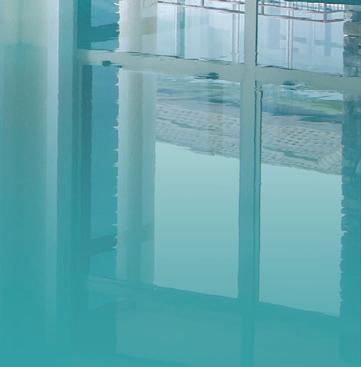
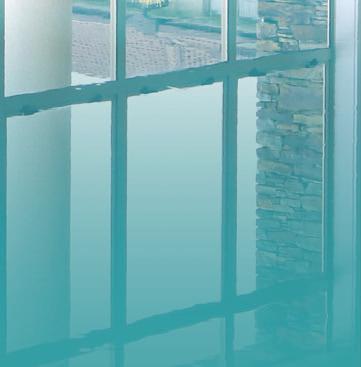
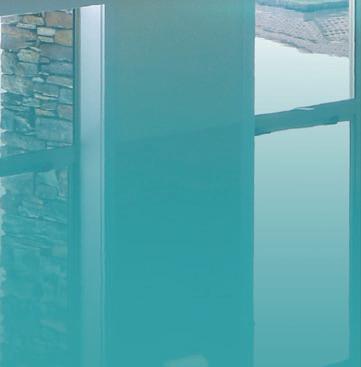
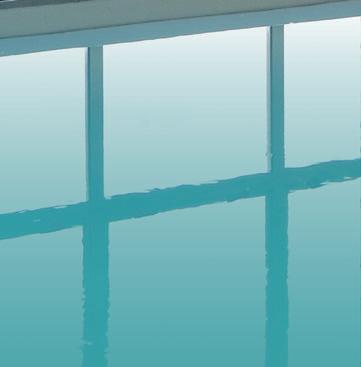
If you’re aged 60 or over, value your independence but want greater security, come and have a look at the superb properties we have to offer.


The apple may not fall far from the tree, but it can land thousands of miles away! Karaka born and raised, GEORGE BAYLY (son of Port Waikato MP, Andrew Bayly) has inherited a familial love of adventure. His brothers joined their dad on past expeditions to the North Pole and the Middle East; recently Andrew and George explored the remote corners of Mongola, as he recounts.
One of the last groups of nomadic reindeer herders in the world, the Dukha live in the Khövsgöl region of northern Mongolia. Given the harsh realities of their life, their tradition is likely to die out over the next couple of decades. We took a New Zealand film producer and Mongolian cameraman with us so we could make a documentary to help raise awareness of their plight.
My father [Andrew] and I visited the Dukha in the winter – January is the coldest time of the year there with day temperatures as low as minus 43 degrees Celsius. Our accommodation was very basic – our hosts live in tepees made from canvas thrown over birch logs with bare earthen floors.

Facing days of travel in deep snow while riding reindeer, we bought specialised clothing and sleeping bags. However, when in Mongolia we also wore local gear including pants made from yak wool, knee-high, dog-fur lined boots, sheepskin-lined coats, and mink hats. We also bought two extremely powerful head torches, most useful when out at night on wolf patrol.
After five days’ travel in 4WD vehicles, we were welcomed by our Dukha family with a meal of precious reindeer meat. They rarely kill reindeer for meat as they are primarily raised for their milk, which has a very high
fat content and can keep for months without being chilled. For a Mongolian, the best meal ever is boiled meat –usually goat or sheep – with noodles, and this is served as a soup for breakfast, lunch and dinner. To us, it wasn’t very palatable!


We reached their main encampment (at 1800 metres elevation) after a day’s ride. Through this experience we experienced the di culty with which the Dukha carry out even the most menial tasks, such as collecting and chopping firewood, or breaking through frozen rivers to access fresh water. One of the regular, daily tasks was rounding up any reindeer that had escaped overnight and herding them back into their enclosure.
Every day we would ride reindeer for up to 30 kilometres in order to visit people, check out a potential grazing area or see a particular sight. Reindeer have oversized, crescent-shaped hooves enabling them to walk without sinking into the snow. Instinctively, they will all step in the tracks made by the leading reindeer.

During one journey, we stayed at a separate camp for two evenings so we could see more of an area known as ‘the Forbidden Land’, taboo as some think it to include the location of Genghis Khan’s grave. On another night, we were caught out in the dark and had to sleep without any shelter



– when we woke, we were all covered in snow!
Our hardest trip involved travelling to the region’s tallest peaks to view the border with Russia and hunt wild boar. It required riding up a (nearly) 35-degree slope, demonstrating how powerful reindeer are – climbing such steep slopes, in waist-deep snow with adult riders and packs on their backs.
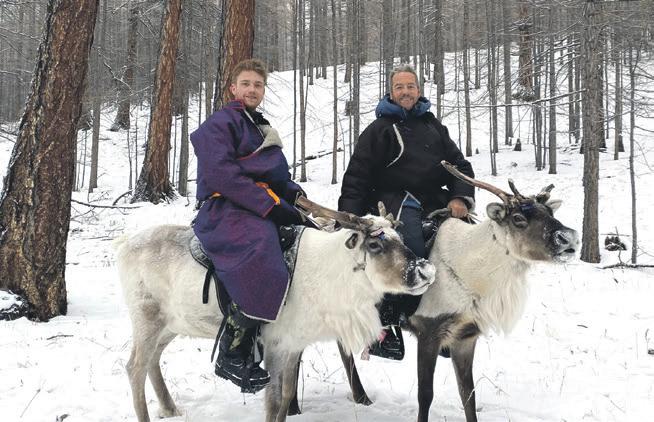
The Dukha need incredible determination to survive in such a brutal environment. And yet, they are some of the most generous and kind-hearted people we have ever encountered. Their future is bleak and, while tourism o ers some hope, it is dreadful that this small, dynamic group may need to remain stationary so tourists can visit them during the summer months.
I am happy we managed to spend time with these people. I have many wonderful memories, but most memorable is the time I shared with my dad, away from all the distractions of our everyday lives.
Prior adventures of Andrew Bayly MP have been recounted in past issues of Rural Living and other Times Media publications; George Bayly now lives in central Auckland while attending university but it’s likely his passion for travel (and writing) will take him much further – editor.






With all ingredients sustainably grown and produced in New Zealand, Cress Valley New Zealand Super Greens is an all-in-one greens powder formulated to pack a real nutrient punch and goodness. Featuring kawakawa, manuka leaf, watercress, barley grass, wheatgrass and broccoli sprouts, this potent mix (RRP $22.50) is intended to bolster our health.

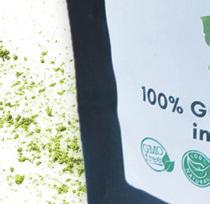




Where were you on April 19 and, more importantly, what did you have for breakfast? This was no ordinary working day, it was… National Banana Day! On this auspicious occasion, Americans right across the USA were going nuts for this superfruit – well, some of those who received the memo from Chiquita may have been. It also signalled the launch of a new range of recipes via www.chiquita.com. We could wait another year to indulge, but that really would be… bananas!












With its new range of aioli, Waiheke Herbs has put a fresh spin on a classic, garlic and olive oil Mediterranean sauce. These delightful dressings are available in three varieties: Herbs, Capers & Olive Oil, Mint, Turmeric and Ginger, and Coriander, Chilli & Lime. Sold in 200g recyclable glass jars (RRP $10), Waiheke Herb’s Aioli is on shelves at select food outlets and supermarkets nationwide.






In combination, the words ‘brown’ and ‘fruit’ don’t seem too appetising but when the result is a wine known for its fruitiness and natural sweetness, mouths are bound to begin watering.







Originating in France’s Muscat region, Moscato grapes deliver a musky aroma and fruity flavour. Since it hit New Zealand bottle stores, Brown Brothers’ Moscato range presents this exotic grape in all its glory, with a lower alcohol content making it ideal for casual consumption.

From tempting tipples to tasty treats, life can be ‘fare’ enough, thanks to these new (and recent) additions to shelves.
Looking to impress guests? This dish is sure to be a ‘roaring’ success! A gamey take on an Italian classic, this recipe for quality comfort food comes courtesy of Deer NZ. For more great ways to make the most of this magnificent meat, visit the New Zealand Venison page on Facebook, and don’t forget to check out our interview with local deer hunter, John Tomlinson, on pages 10-11.
Serves 5-6 | Prep time: 15 mins | Cooking time: 50 mins
Bolognese
500g venison mince
1 carrot
1 brown onion
3 cloves garlic
2 tsp olive oil
2 beef stock cubes
1 1/2 tsp dried oregano
2 Tbsp tomato paste
400g canned, crushed tomatoes
2 1/2 tsp brown sugar
2 tsp balsamic vinegar
Cheese sauce
35g butter
3 1/2 Tbsp plain flour
2 1/3 cups milk (585ml)
1 2/3 cups grated Colby or cheddar cheese (165g)
Lasagne
6-7 instant lasagne sheets
1/2 cup grated mozzarella cheese (50g)
For the bolognese, finely dice carrot and onion. Crush the garlic and heat oil in a large non-stick pot on a medium-high setting. Cook carrot, onion and garlic until tender (about five minutes). Add mince and cook, breaking up with a wooden spoon, until it is browned all over. Stir in crumbled stock cubes and oregano and cook for 30 seconds. Add tomato paste, canned tomatoes, sugar and vinegar. Reduce heat to medium. Preheat oven to 190ºC (fan bake) while simmering the bolognese, stirring occasionally, and preparing cheese sauce.
In a separate, medium saucepan, melt butter and heat until bubbling. Stir in flour and cook for 30 seconds. Gradually whisk in milk to form a smooth sauce. While stirring, cook the sauce for about five minutes, until it thickens – it should coat the back of a wooden spoon. Stir in
cheese. Season the cheese sauce, as well as the bolognese, with salt and pepper to taste.
Spread a little of the cheese sauce in the base of an oven-safe dish, approximately 25cm square. Cover the first layer of the dish with lasagne sheets – roughly one and a half sheets per layer, breaking them as needed to fit. Spread one third of the bolognese on top, followed by a quarter of the cheese sauce. Repeat to form two more layers of pasta, bolognese and cheese sauce. Add a fourth layer of lasagne sheets, cover with the remaining cheese sauce and sprinkle mozzarella on top.
When the oven is up to temperature, bake the lasagne for 30-35 minutes. When it is golden brown and bubbling, and the pasta is cooked through, remove the lasagne from the oven. Allow it to rest for five minutes before slicing.
Serve with a green salad, some fresh bread on the side, and enjoy!
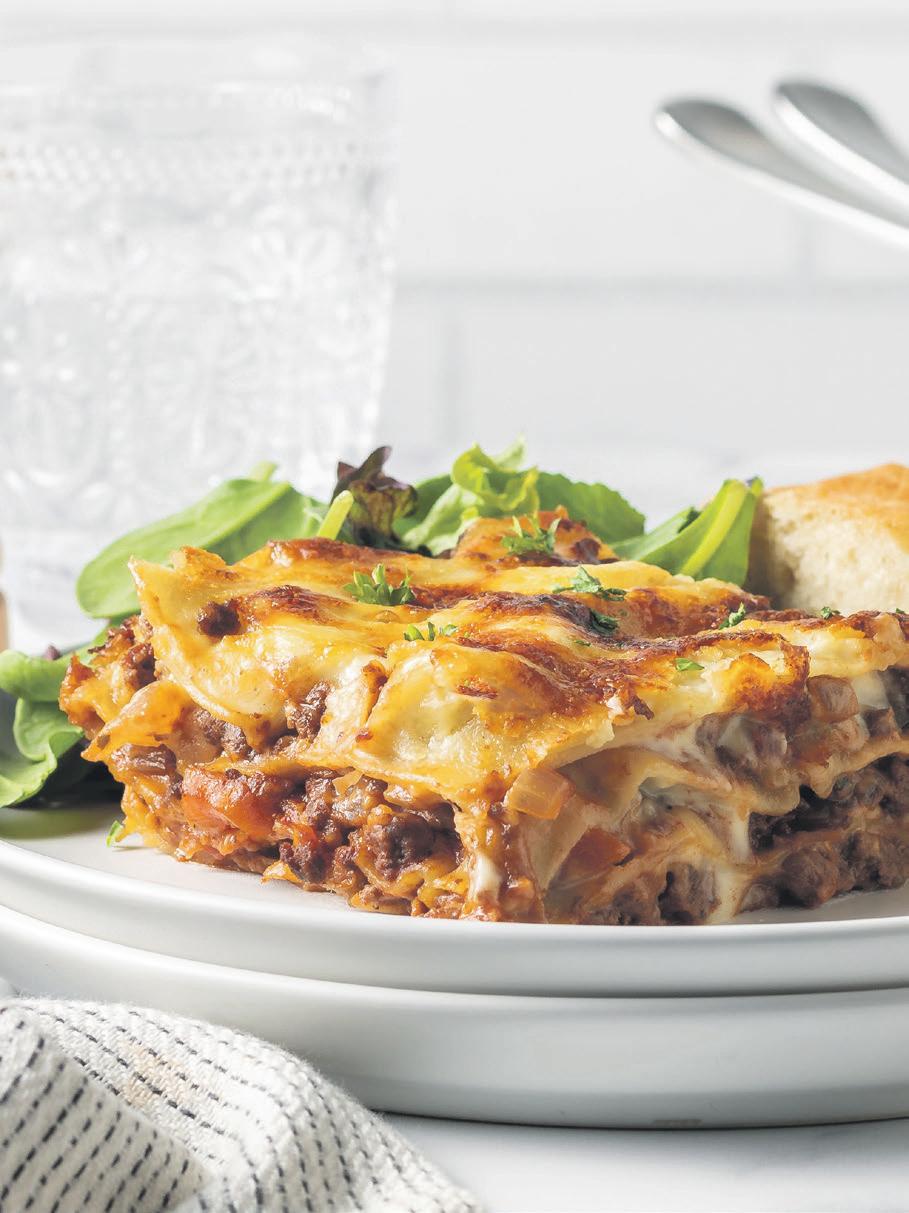
Coconut, oats and golden syrup don’t exactly seem to belong on a First World War battlefield but there is a very good reason why such flavours, in combination, were forged as a result of the heat of combat. This recipe was designed to ensure biscuits could last long enough to be transported to soldiers on the other side of the world, however it’s likely they’ll be snapped up on the home front all too quick!
Some may think this recipe could tie in with ANZAC Day, but it’s not actually named after the infamous General Benedict Arnold at all; instead, its origins are more likely due to the dietary choices of a pope. However, come Mother’s Day (May 14) many a mum will enjoy this dish as a breakfast in bed, perhaps with a kiss or three! For more recipes, all of which are child’s play to make, visit www.eggs.org.nz.
100g butter
1/2 cup golden syrup
1/2 tsp baking soda
2 tbsp hot milk
1/2 cup flour
1/2 cup sugar
1 cup dried coconut
1 cup rolled oats
Line baking trays with baking paper and heat oven to 180 degrees Celsius. In a large bowl, stir together sugar, coconut, rolled oats and sifted flour.
Melt the butter in a saucepan over a medium heat, combining golden syrup. Remove from the heat. Dissolve baking soda in hot milk.
Pour the wet ingredients into the bowl, stirring until combined. Roll the mixture into balls (roughly one tablespoon in volume), flatten onto the baking trays leaving a few centimetres between each one.
Biscuits should be baked until they’re golden brown; this should take roughly 10-15 minutes.
Allow biscuits to stand for a few minutes then cool on a wire rack (giving them time to harden) and store in an airtight container. Alternatively, they can be enjoyed while still a little warm and gooey.
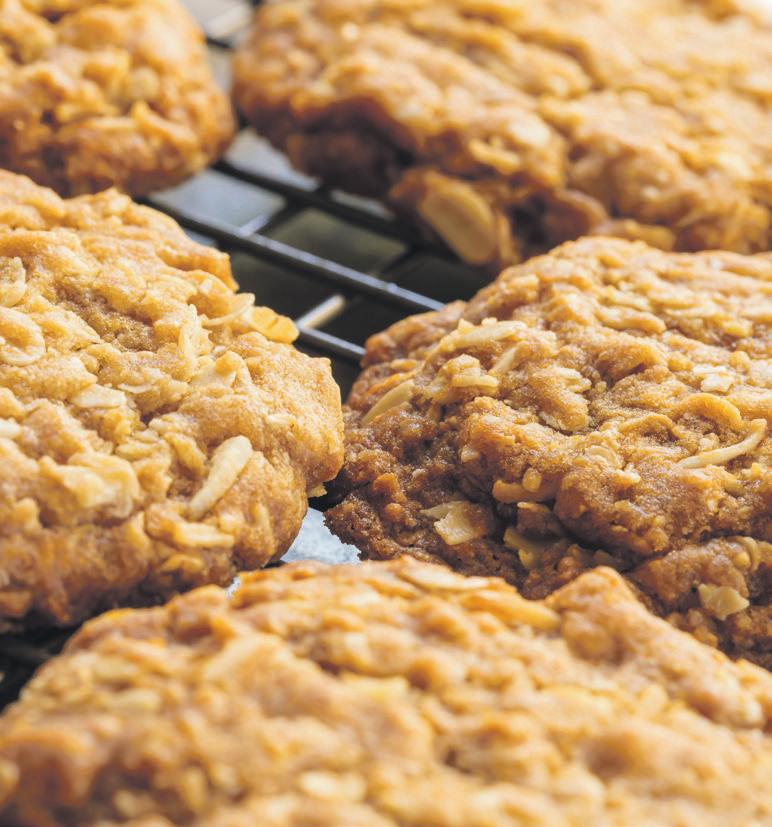
4 English mu ns
4 rashers of bacon
4 eggs
3 egg yolks
2 tbsp lemon juice
150 g butter, melted
A dash each of salt and pepper
For the hollandaise sauce (which can be made in advance), place egg yolks, lemon juice, salt and pepper in a blender or processor and process until pale and smooth. Tilt the processor to increase the depth of the liquid, allowing the blades to beat or whisk the mixture so it coagulates. Propping a book or chopping board under one edge helps with this.
Very slowly, pour the melted butter while the blender motor is running. The mixture should remain thick and pale. Gently reheat in a bowl by setting the sauce over simmering water.
To assemble the dish, grill, fry or microwave the bacon rashers, toast the mu ns and poach the eggs. Place the bacon onto a toasted mu n half, top with a poached egg, add a spoonful of hollandaise sauce and top with a dash of black pepper.

While carrots may be more often favoured, parsnips are just as easily grown and can deliver a sweeter, nuttier taste to the table. What’s more, as they can happily grow with little care or attention, we need not spend too much time up to our elbows in the garden during winter.
Originating in Europe and parts of Asia, parsnips (Pastinaca sativa) gain their name from the Latin for ‘cultivated food’ and have been grown for their taproots since the Roman era.

While Kiwis in cooler climes may avoid planting parsnips in winter, in Franklin they can be sown from late summer through until spring – avoid sowing seeds in the heat of summer, however. As parsnips are reasonably hardy, they’ll grow in soil temperatures as low as six degrees Celsius once seeds have germinated.


Choose a spot where plants will receive as much sun as possible during winter months and sow in rows

approximately 40-50cm apart. The soil should be well worked, or loamysandy, and free draining, allowing plenty of room and depth in which to grow. Try adding a little sand with the seeds to improve drainage.
Once sown, pouring a little boiling water over the seed can help break seed coats open. Ensure seeds are kept moist until germination. When grown from autumn on, mother nature should provide all the water they need.
Depending on the variety (the most common are Guernsey, javelin, hollow crown or supersnip), parsnips should be ready within (roughly) a couple of months or so. However, it is best to wait until one or two frosts have occurred – this results in starch being converted into sugars, lending them a sweeter taste. Then again, if they are left in the ground for too long, they will become woody and inedible, so it pays to be conscious of the exact variety you’re growing.
Use a garden fork to lift the roots
from the soil when ready. Parsnips can then be chopped and frozen but be sure to clip o any remaining leaf stalks and wash and dry them thoroughly first.
Roasted or boiled and mashed (delightful with carrots) are the most common methods for cooking these veggies. Alternatively, they make an interesting addition to stirfries and can provide a sweet, healthy base (thanks to their vitamin C, potassium, iron and fibre) to soups or stews.

As the seasons change, the days get shorter and the temperatures cooler, so we shift our focus indoors to ensuring our homes are warm and dry during winter. For this reason, we often consider upgrading curtains and other window treatments. However, it pays to be on track with latest trends and to avoid common, costly pitfalls.
To begin with, always make sure to hang curtains high and wide. Aim to position curtain rods (or tracks or combinations of both) approximately 20-30 cm above the window architrave, or almost to the ceiling in some cases. This will help make the ceiling seem higher and, in turn, make the room feel more spacious. Note that curtain tracks can be concealed behind more decorative curtain rods.
Also, extend the curtain rod well past the window architraves on both sides – again, this makes the window appear larger. Of course, selecting a longer curtain rod with longer curtain drop adds to the meterage of fabric required but it’s all relative to your budget and the look you are wanting to achieve.


Layer your window treatments – opt for unlined sheers teamed with lined, main curtains. Traditionally, unlined sheers are positioned on the rod (or track) closest to the window with the lined, main curtains positioned closest to the interior of the room. However, switching the sheers and main curtains over on the rods/tracks allows the colours of the curtains to appear as a backdrop behind the translucent sheer. This option doesn’t cost any extra, but it delivers a di erent look.

Finally, resist having curtains at sill height and avoid using vertical blinds, as these window treatments will not enhance the appeal of your room and they won’t provide much help with keeping your home warm and cosy in winter.
During the last 25 years, I’ve thoroughly enjoyed helping transform people’s homes with curtains, blinds and shutters. So, for more advice, simply give me a call!














Buyers are starting to return to the Auckland housing market. Sales reached their highest number in 10 months and prices are holding firm compared to those over the previous two months.
March showed a modest but positive improvement in trading, buyer confidence lifted, and we sold 765 homes during this time. While this is well down on our usual number of sales in March, it’s up 86.6 per cent on those in February to become the highest number of monthly sales we’ve made since last May.


The pipeline of conditional sales in March also increased significantly, indicating that there is likely to be a strong flow of sales going unconditional in April. While sales were made across all price segments, we sold 60 homes for more than $2 million, which shows strong recovery for property in this segment. In fact, it is higher than the combined number of homes we sold in this category during the first two months of the year.
March’s median ($1,025,000) and average prices ($1,102,933) were on a par with those paid in February and both figures confirm stability over the past quarter. Based on these, there is more reason to believe (from a price perspective) that the market has plateaued rather than continue to fall.
The price decline, on a year-on-year basis, now sits between 10 and 13%, and a number of buyers have decided March was the time to re-enter the market rather than sit on the sideline.
The month’s new listings total (1,460) was strong compared to the first two months of the year but not as strong as in March 2022. At month end, the number of listings (4,751) was in line with where it is at the end of any March, so buyers prepared to make a commitment have a good range of properties from which to choose.



The rural and lifestyle markets showed modest signs of better trading in March, with some new listings and sales reaching $59 million. However, they lacked the level of consistency starting to appear in the Auckland urban market. March’s turnover in these markets was the highest for four months but buyers remained reluctant to commit and dealing with bank lending remained challenging.
With winter ahead, curtains draw the focus of our regular interior design expert, Rachael Buxton.



















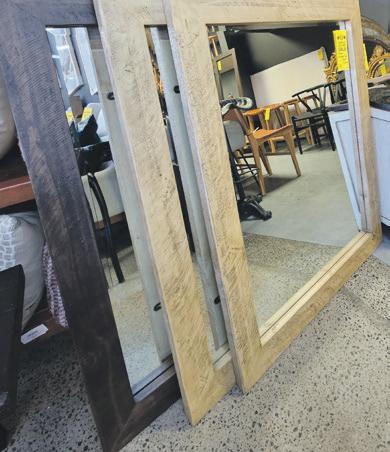




Wooden homes have their benefits, but the age-old practice of constructing dwellings from stone (or brick) is at least as fashionable and functional as ever. There are some downsides to building homes from stone. For a start, they are often more expensive than timber constructions, taking longer to build and requiring the work of specialist builders. And yet, the benefits often outweigh
(literally?) the cost. Water and wind resistant, stone and brick are also fireproof, and (dare we say?) ‘wolfproof’. It’s also ‘child resistant’ as even the most determined tantrum won’t result in holes in stone walls and scratches practically scream ‘character!’ Mould is not an issue and stonework requires minimal cleaning and maintenance. Provided the most compatible and e ective insulation is installed,
stone helps regulate temperature, so homes are prone to be warmer in winter and cooler in summer.





Facing climate change, sustainability is fast becoming a concern. In this sense, stone is a good option, requiring less processing than timber, for example.
Not everybody must get stone, but many are choosing to take a back to the future approach by using this timeless material.


Nestled in the calm waters of the Manukau Harbour, just off the coast of Karaka, Pararēkau Island is truly a unique location. Standing on the island, feeling the soft ocean breeze, It’s hard to believe you’re just 3 minutes drive to the motorway, and 33 kilometres from Auckland’s CBD.

Sections now available from $1.6M



From preparing the soil to planting long maturing and large, seeded vegetables early in the new season, we provide the following essentials for creating a flourishing garden.
Starting at the base with soil preparation ensures a solid foundation for future growth. This involves breaking up hard clumps and removing weeds and debris from garden beds. Further improve the quality of your soil by adding compost or well-rotted manure before planting your vegetables, but do not over-fertilise the soil if you are growing carrots, as this can cause forking of the roots.
For a verdant boost to the soil, green manures are the answer. These fastgrowing, nitrogen-fixing plants are cultivated specifically to be dug back into the soil a few weeks from planting.
The purpose this serves is to improve the quality and nutrition content of the soil. You are advised to plant one now to dig into the soil, thereby feeding the autumn planted crop.








Experts recommended getting an early start for autumn vegetables that need a long season to mature. Varieties such as cabbages, broccoli and brussels sprouts can take 16 weeks to reach maturity, and if they are not ready to be harvested by the time the spring arrives, you may end up with beautiful plants but little to harvest. You should also plant large, seeded varieties, such as peas


and broad beans, directly into the garden when cooler conditions take hold.

















A comprehensive garden clean-up means leaving no place for pests to hide. Ongoing maintenance also ensures an autumn garden that is set to thrive. Essential chores include:

• Make a concerted e ort to thoroughly tidy up borders.

• Prepare and treat lawns for the cooler months.

• Start making and storing leaf mould for garden use.











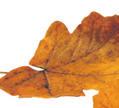

• Clear out compost bins.
• Plant evergreens early in the season.
• Divide, li and replant perennials into well-fertilised soil.







• Plant new trees and plants.





• Make new plants from cuttings.
• Remove all leaves on a regular basis.




• Trim and prune hedges and plants.


• Feed citrus trees and check for pests.











Preparing to sell in the spring? Autumn is a great time to be during some of that pre work – it will pay dividends! Don’t know what you should be doing? Then contact Jo-Ann and Victoria.



TEAM TOWN AND COUNTRY
BRINGING YOU THE BEST OF TOWN AND COUNTRY
Even though nature is in decline in the season of fall, avid green thumbs know that autumn is a busy time in the garden.

EAT? FEET! While they say one should never go shopping on an empty stomach, surely this doesn’t extend to purchasing furniture. And yet, it’s clear the designers at Gugliermetto Experience were hungering for something, while also yearning to put their feet up, when creating their ‘big eat’ range.

With home comforts ranging from armchairs and sofas to poufs, this Italian company has obviously been thinking about kitchens while devising new products for living rooms. Expressing that good taste never goes out of style, these creative Europeans are fast turning the tables on traditional interior design.




Products from this range are available online via www.g-experience.it/en.


















